











REGISTER BEFORE APRIL 29TH & SAVE 10%













REGISTER BEFORE APRIL 29TH & SAVE 10%
Registration is now open for all YMCA Summer Day Camps at dozens of ��������������������������������������������������We’ve got camps for every child, including traditional camp and specialty camps offering everything from sports to STEAM! Swimming is available at most camps, and we’ll work with each camper to strengthen their swimming ability during their time at camp.
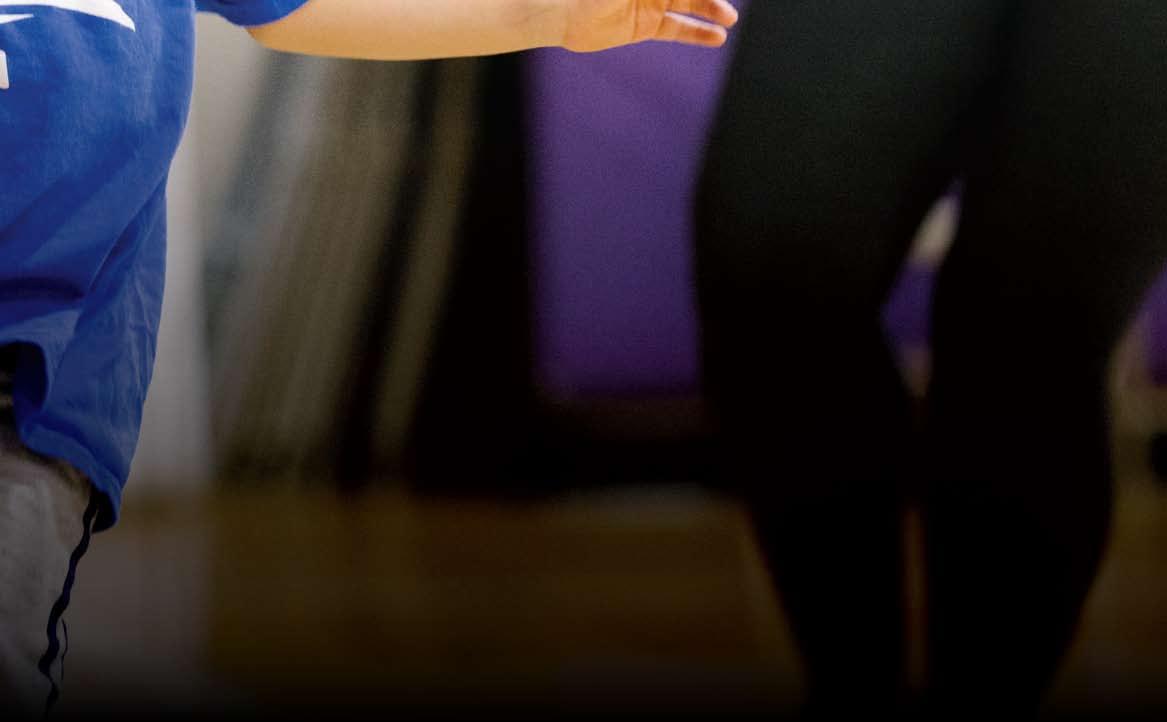
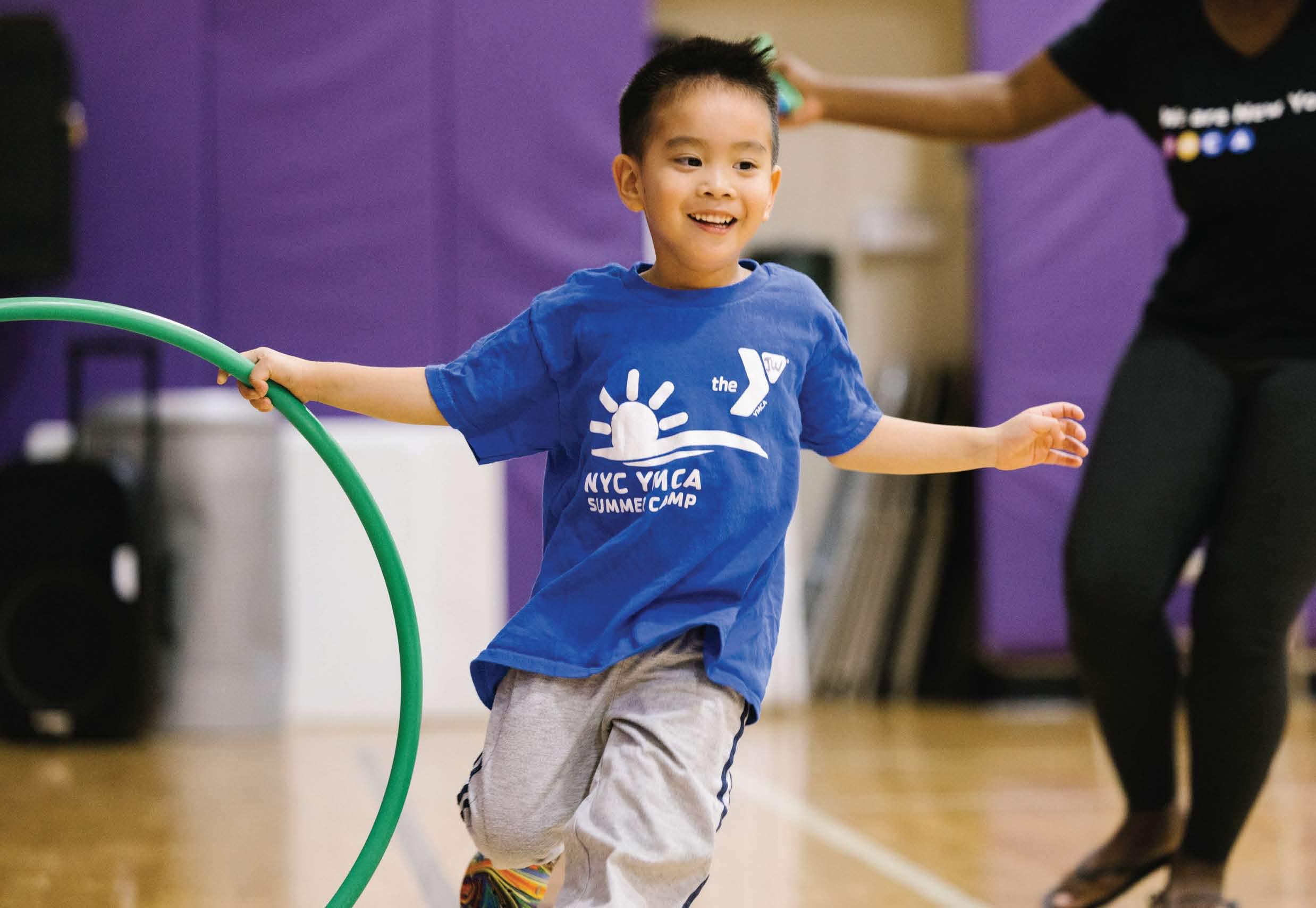
WHY YMCA SUMMER DAY CAMPS?
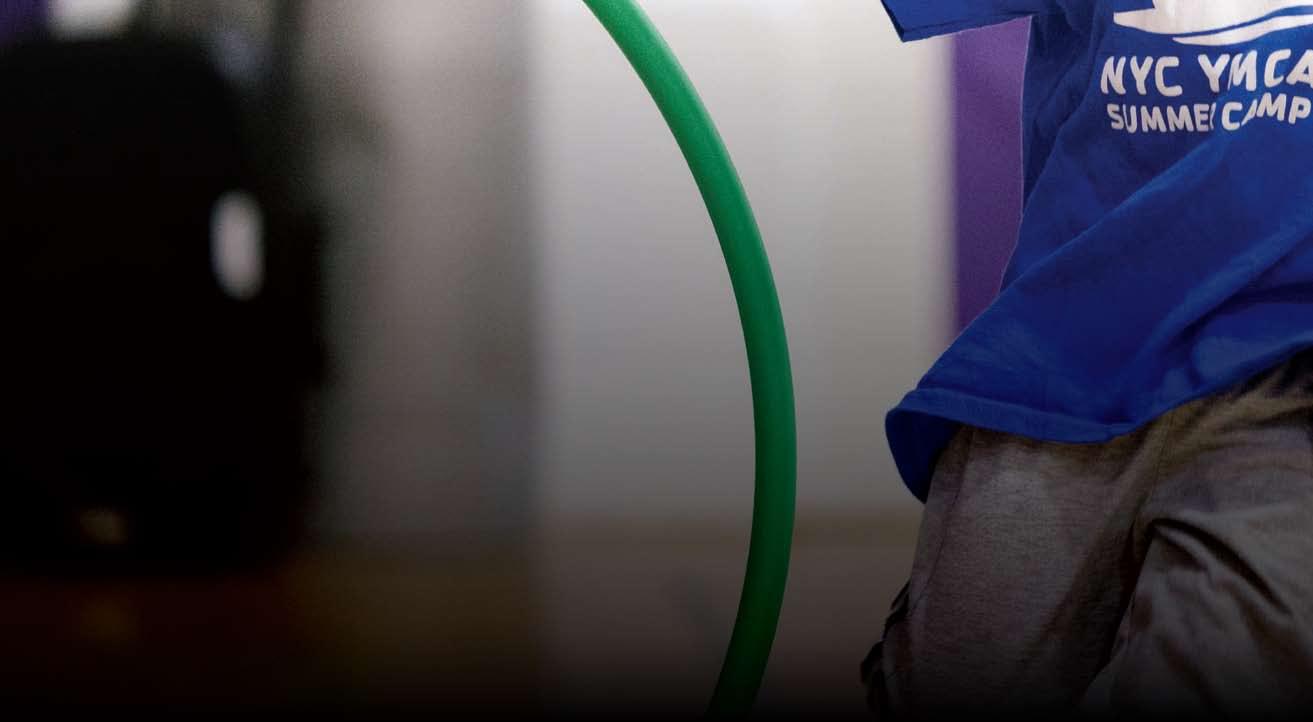
• Talented and experienced staff
• Amazing and uplifting camp spirit
• Healthy and clean environments
• Instructional swim lessons
��������������������������������������������������������������� ������������������������������������������
LEARN MORE AND REGISTER
�������������������
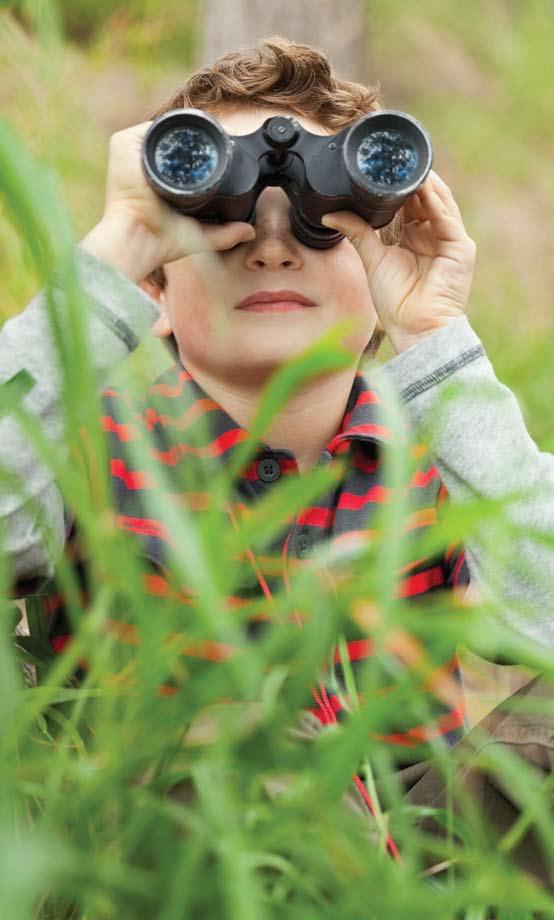
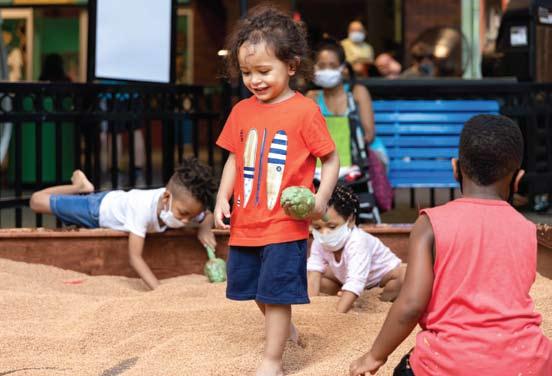



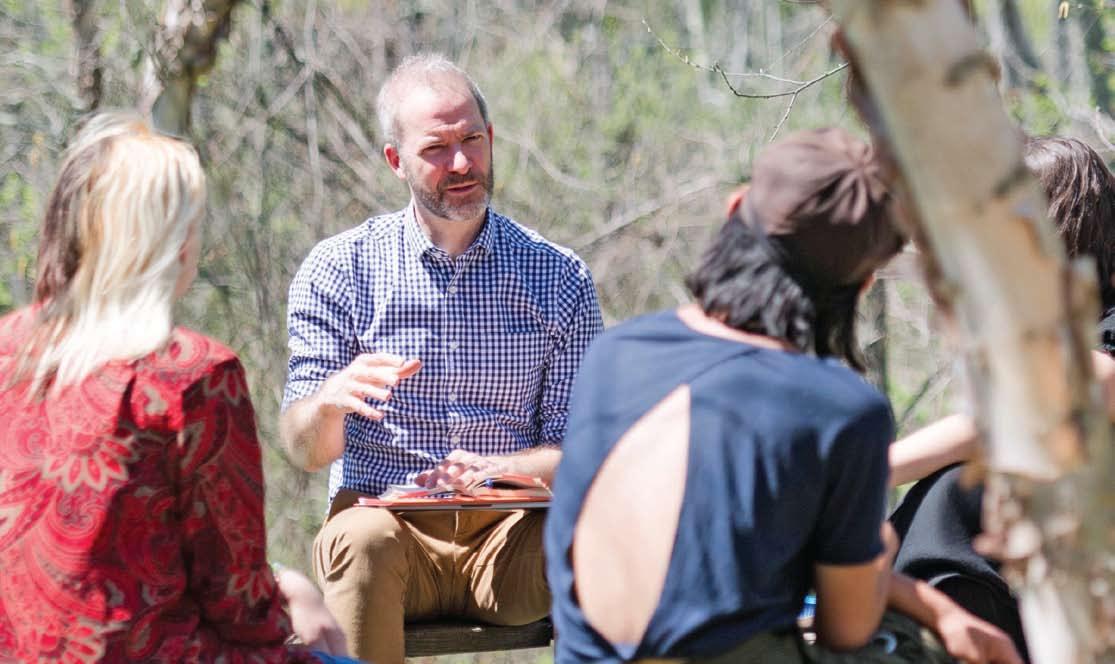
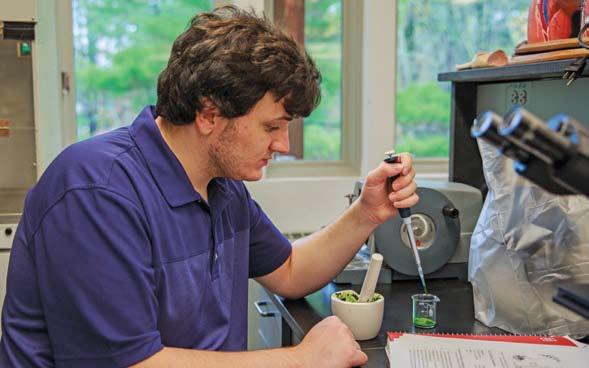











This month we are all about guides and lists. Whether you’re wondering When the Next Step Is an IEP (page 18), or The Benefits of Horse Therapy (page 22), we have these and other helpful articles in our Special Child Resource Guide that can be found starting on page 17.
Many of our kids have e-devices. Read up on What to Know about Safely Storing E-bikes and E-scooters (page 8).
Check out our Spring Bucket List (page 12). From rollerskating at Flipper’s Roller Boogie Palace, to visiting Janes Carousel, to heading to Coney Island — we are chock full
of ideas for seasonal fun. Lastly, while people travel worldwide to Birdwatch (page 24), many of us have been flocking (hee, hee) outdoors here in New York to check out the eclectic array of birds in our parks. And we’re here for it! This month’s cover features some of NYC’s best places to see birds. Our guide, written by NYF editor and lover of all birds and bunnies Barbara Russo, breaks down by park and what species can be found and where. Enjoy!
Donna Duarte-LaddnewYorkFamily.com
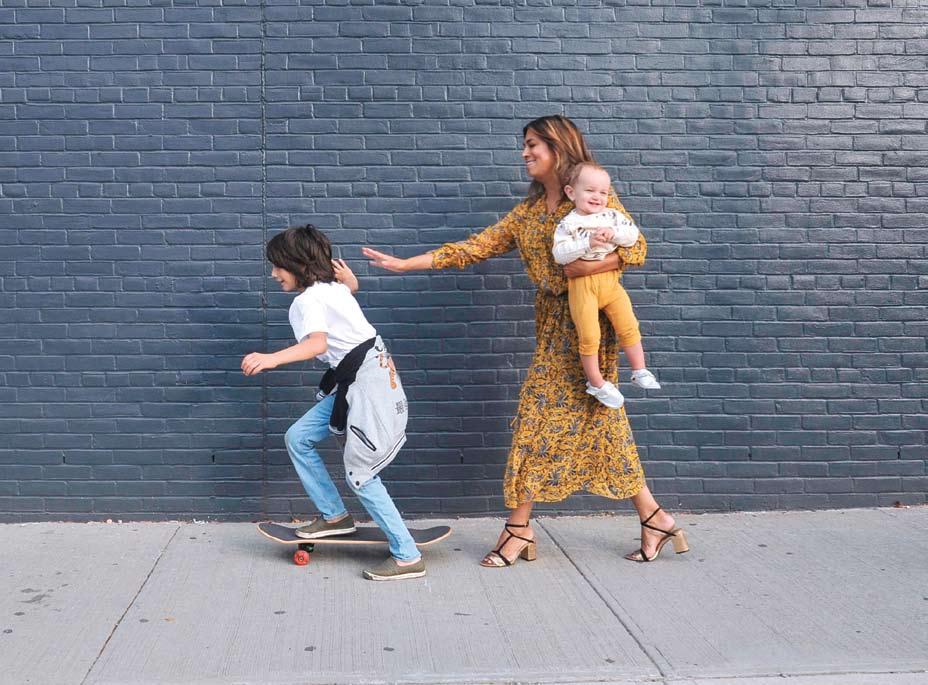
p u B li S her: Clifford Luster
e xecutive Director: Donna Duarte-Ladd
aSSociate p u B li S her: Erin Brof
aDverti S ing Director:
Stacie Goldberg
Deputy eDitor: Jeannine Cintron
Digital eDitor: Kaitlyn Riggio
e vent S manager: Shara Levine
r eporter: Barbara Russo
Senior aDvi S er: Susan Weiss
partner S hip manager S : Lauren Alperin, Lauren Anchin, Joan Bergman, Mary Cassidy, Chris Cunnington, Lori Falco, Shelli Goldberg-Peck, LynnMarie Hanley, Lisa Herlihy, Janine Mulé, Cara Roteman, Nina Spiegelman, Gwen Tomaselli
marketing & Strategy Director: Rosalia Bobé
Sale S & marketing coor D inator: Mykael Fields
marketing aSS i S tant: Tilejah Gilead
art Director: Leah Mitch
we B Developer: Sylvan Migdal
g raphic De S igner S : Arthur Arutyunov, Connie Sulsenti
eD itor S at large: Serena Norr, Cris Pearlstein
eD itorial contri B utor S : Jana Beauchamp, Mia Salas
eD itorial i ntern S : Bailey Germain, Brian Zhang
aDverti S ing : (718) 260-4554
Advertising@NewYorkFamily.com
circulation: (718) 260-8336
Tina@NewYorkFamily.com
aDD re SS : New York Family Media/Schneps Media 1 MetroTech Center North, Third Floor Brooklyn, NY 11201
p re S i D ent: Victoria Schneps-Yunis
ceo : Joshua Schneps
coo : Clifford Luster
New York Family has been awarded the PMA Gold Award for Excellence in Editorial and the Silver Award for Excellence in Design.
Rivendell School provides a warm, creative environment where children develop independence, respect for each other, and a lifelong love of learning.




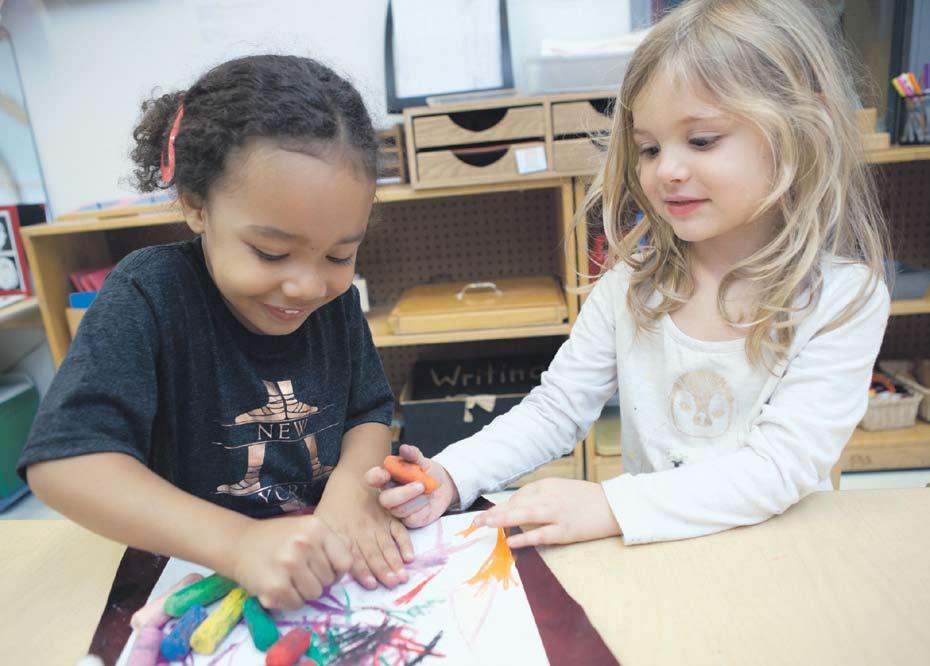



Almost everywhere you look in NYC, someone uses an e-bike or e-scooter. Despite their popularity among New Yorkers of all ages, these devices contain lithiumion batteries that have caused a recent rash of raging, damaging — and in some cases deadly — fires around the city. You may be surprised to learn this, but you may have gear in your home that is being charged by lithium-ion batteries. As parents buy more e-scooters and VR systems for their kids — awareness of these batteries is a first step (for example, we had no idea we had one in our own home and only checked while this article was being written.) If you have an e-bike or e-scooter, knowing how to store them and charge their batteries safely is key to keeping your family and others safe.
A lithium-ion battery is a type of energetic, rechargeable battery. They’re very popular lately because they have some advantages over other batteries. They’re lighter than other types of rechargeable batteries, they hold their charge and can handle hundreds of charge/discharge cycles. Certain smartphones and smart devices contain lithium-ion batteries, but e-bikes and e-scooters pose the biggest and most concerning threat when it comes to fire.
The problem with these batteries is that they store a large amount of energy in a small amount of space. When batteries aren’t used the right way, or if they’re defective, they can be quite dangerous, fire officials say. They can overheat, catch fire or even explode. When fires like this occur, they burn very hot and are difficult for firefighters to extinguish.
“They take a lot of amperage. Most people don’t have a 20-amp outlet that it needs for the charging, Stephen Berger, a volunteer firefighter and former fire chief from Nassau County, said. “So, the mistake people make
is they think it’s like a regular battery where you have a regular 15-amp outlet and charge it overnight. Then, it overheats and catches fire.”
E-bikes and similar devices still need to be charged in order to be used, of course. But it’s important to do so correctly and safely. For starters, never leave a charging device unattended.
“If you’re going to charge a lithium battery for an electric scooter or bike, charge it someplace where you can observe it. It should not be left unattended,” Berger said.
The dangers of lithium-ion batteries aren’t going unnoticed by lawmakers and authorities in city government. Officials including FDNY commissioner Laura Kavanagh are advocating for better regulation of e-bikes and e-scooters.
Fires caused by e-bikes and e-scooters happen with some regularity. In fact, the FDNY reported more than 130 such fires in 2022, and the numbers are rising. Electric bike batteries were the cause of several recent fires in NYC this year, too.
“Lithium-ion batteries power many of the products we use in our daily lives, by and large functioning without issue,” Brian O’Connor, a technical services engineer at the National Fire Protection Association (NFPA), said. “At the same time, lithium-ion batteries do pose potential fire risks, so it’s important to use and maintain them properly, and to be able to recognize signs of malfunction. That level of awareness can go a long way toward minimizing the likelihood of a fire.”
Fire prevention experts also recommend charging your e-bike or e-scooter outside the house.
“They don’t recommend you charge it
inside the house, if possible. But if you do bring it in, sit there and watch it,” Berger explained.
Lithium-Ion Batteries:
The NFPA recommends these safety tips for charging e-bikes, e-scooters and similar devices with lithium-ion batteries:

• Purchase and use devices that are listed by a qualified testing laboratory.
• Always follow the manufacturer’s instructions.
• Only use the battery that is designed for the device.
• Put batteries in the device the right way.
• Only use the charging cord that came with the device.
• Do not charge a device under your pillow or on your bed or couch.
• Do not keep charging the device or device battery after it is fully charged.
• Keep batteries at room temperature when possible. Do not charge them at temperatures below 32°F (0°C) or above 105°F (40°C).
• Store batteries away from anything that can catch fire.
The NFPA says to stop using a battery if you notice an odor, change in color, too much heat, change in shape, leaking or odd noises. If it’s safe to do so, move the device away from anything that can catch fire and call 911.
Never throw lithium-ion batteries in the trash. Take them to a battery recycling location. The NYC Department of Sanitation website has a lot of information on how to safely and legally dispose of batteries.
For more information about e-bike and fire prevention safety, visit nyc.gov or nfpa. org.
What to know about safely storing e-bikes and e-scooters and tips for the best way to charge lithium-ion batteries
Children age 6-10 are invited to audition for the world-renowned School of American Ballet as seen in the Disney+ docuseries ON POINTE.
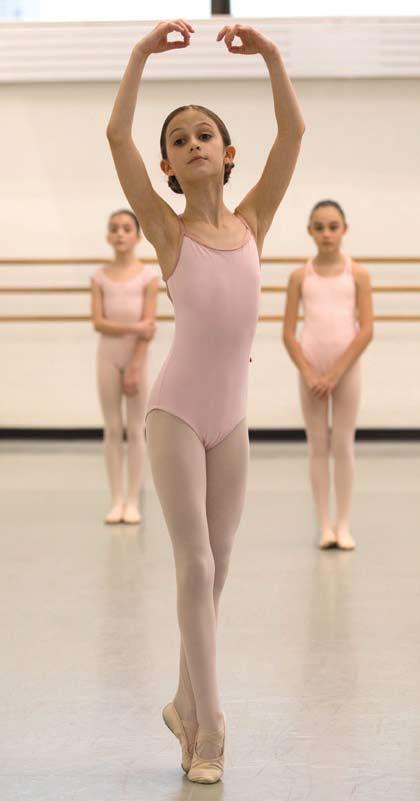
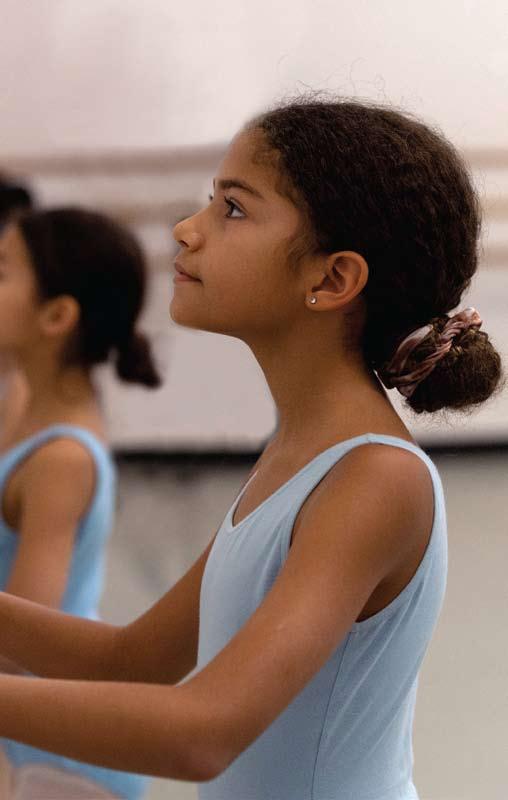
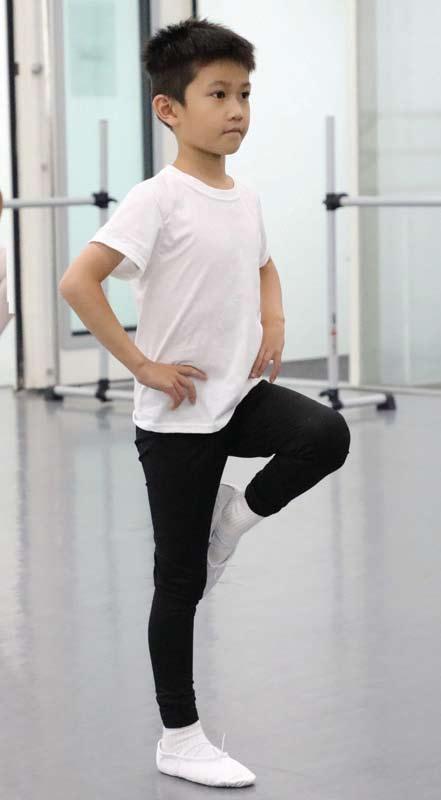
SATURDAY, APRIL 29, 2023
1:30 p.m. (age 6*) 2:00 p.m. (age 7) 2:30 p.m. (age 8) 3:00 p.m. (ages 9-10)
Brooklyn Center for the Arts 28 Madison St.
NO PREVIOUS TRAINING REQUIRED

Classes begin in September | Substantial scholarship program for students with need | *Students must be 6 by 9/1/2023 to audition
LOCATIONS
This program is supported, in part, by public funds from the New York City Department of Cultural Affairs in partnership with the City Council, by the New York State Council on the Arts with the support of the Office of the Governor and the New York State Legislature, by an award from the National Endowment for the Arts, and by grants fro m the Rose M. Badgeley Residuary Charitable Trust and The Cestone Family Foundation.




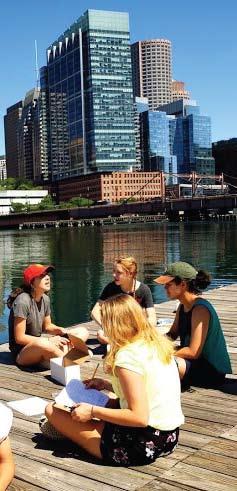
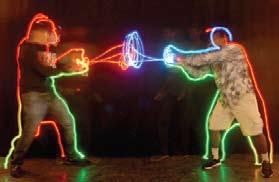
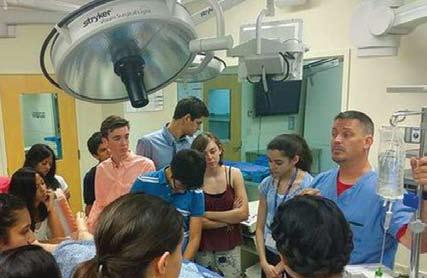
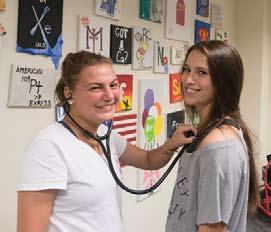
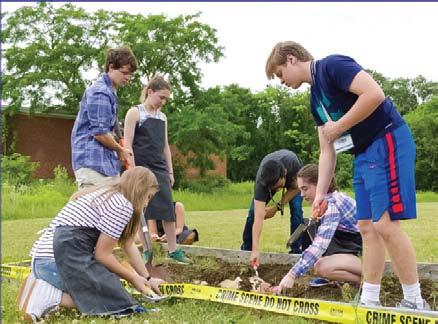
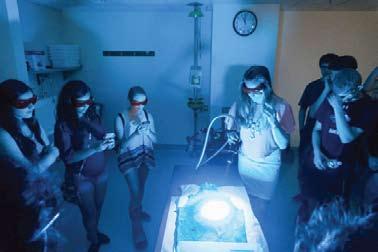

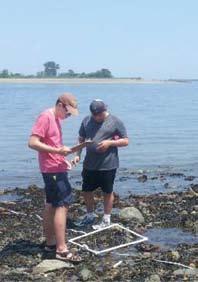
As New York parents, we’re all too familiar with the many options for school. We know how overwhelming (and time-consuming) it can be to research the different options and find out what would work best for your child. That’s why we’re coming in clutch with your guide to all things bilingual education!
Bilingual education has become increasingly popular in New York and beyond, so we’ve got the scoop on why that is and how some of these programs are structured. If you’re considering sending your children to a school with a bilingual program, stop the oh-so-exhausting research process now and check out our brief (but informative, as always) summary about what to expect. Read on to find out if bilingual education is for your family.
Bilingual education has been around for quite some time now. Private schools each have their own founding stories, many dating back to the early 20th century. But as for bilingual programs in New York public schools, bilingual and ESL education appeared in 1974 following a lawsuit against the NYC’s Board of Education for failing to educate Puerto Rican students with limited English skills. Since the implementation of the Aspira Consent Decree, New York ESL and Bilingual programs have expanded to serve students speaking over 145 languages. While bilingual education began primarily as a way for kids who speak their native language at home to learn English, it has since become attractive to parents of kids who already speak English natively. Why? Keep reading to find out!
You may be wondering what all the hype is about bilingual education anyway. First and
foremost, bilingual learning not only connects students with another language but with that language’s culture as well. We all want to see our children grow into well-rounded adults with a strong education, but we also want them to accept difference, celebrate diversity, promote inclusion, and craft an open mind. Bilingual education shows kids from an early age that their own language and culture is not the only one, and it broadens their perspective from New York to the greater world in which we are all a part of.
Not only do kids develop more inclusive views early on, but bilingual education instills empathy. Think about this: your child is learning to speak both English and Italian.
All of their friends at school are too, but some of their friends in their neighborhood at home don’t go to a bilingual school. So your child has to think about this, and then decide to use English when communicating with these friends: in other words, they have to think about others before thinking about themself. While this quick decision-making process may seem trivial, it kick starts empathy, collaboration, and social emotional skills from a young age.
And finally, studies have shown that bilingual education accelerates and improves many academic skills (extending well beyond the classroom), such as reading levels, problemsolving, math competency, creative thinking,
and more. Part of this is because learning two languages at once sharpens their memory, but it’s also because learning two languages shows kids that there is more than one way to approach something. Much like their decision to speak either language based on their situational context, they’ll likely look at challenges in the same way, whether that means coming up with multiple ways to build something STEM related or thinking about solving a math problem on a test in numerous ways.

Now that we’ve covered our bases on why bilingual education is so popular let’s go over the types of bilingual education because there are even subcategories within the categories when it comes to New York education.

Public vs. Private : The first decision you have to make is whether you want to send your kids to a public or private bilingual school. Before that, you should consider what foreign language you want your kids to learn. Public schools offer many English-Spanish programs, but if you’re looking for Italian, German, or French bilingual education, you’ll
likely have more options with private schools. This isn’t to say that you can’t find programs with these languages in public schools: many public schools offer Chinese, Russian, Arabic, Italian, Bengali, French, and more. But the catch is that you’ll have to apply to attend that school if you don’t live in that district. As for private schools, your kids will likely have more focused attention on them and their language learning because of the smaller number of students. Many bilingual private schools have two teachers in every classroom — one who natively speaks English, and the other who natively speaks the other language that the school teaches. Both public and private schools have their pros, but if you are hesitant to browse private schools because of financial circumstances, be sure to check
out their admissions pages first. Many New York private bilingual schools offer generous financial aid and scholarships, so don’t let this deter you!

English as a Second Language vs. Dual Language : Does your child speak another language at home and you want them to learn English through school? If yes, then English as a Second Language (ESL) is the bilingual education format you want. If your goal is for your child to learn two languages simultaneously (half instruction in one language and half in another language), then Dual Language is the right fit.
Hopefully, this guide summed up bilingual education for you. If you’re considering sending your little one to a bilingual school.
Bilingual Bebe
303 Cooper St 4th Fl., Brooklyn, NY 347-824-0721
bilingualbebe.com

Bilingual Bebe is an online language school for children ages 3-15. The school aims to make bilingual education accessible for all families by offering curriculums in common languages, like French, Spanish, and Chinese. Each class has a maximum of five students and runs for 45 minutes. Led by nativespeaking teachers, students develop traditional language skills (speaking, reading, etc.) while participating in fun group activities such as singing and storytelling. Parents say the wellrounded curriculum helps kids build and maintain proficiency in the foreign language or their family’s heritage language. They offer a free trial class for the first lesson.

Studies have shown that bilingual education accelerates and improves many academic skills (extending well beyond the classroom), such as reading levels, problem-solving, math competency, creative thinking, and more.
Spring brings a little step to us New Yorkers. It is the perfect time to enjoy the outdoors such as strolling on one of our majestic bridges or heading indoors and visiting one of New York’s many iconic cultural institutions. The best part is you can mix it up with some of the many free things New york has to offer-Happy Spring!
1. Spend a morning at the New York Botanical Garden and roam the outdoor gardens and collections, including the Everett Children’s Adventure Garden for *Free* on Wednesdays from 10 a.m. to 11 a.m.
2 . Head to Goshen, NY and enjoy the Spring season of Legoland New York, now a
Certified Autism Center.
3. Long Island City, Queens is home to MoMA PS1’s where you’ll find current exhibitions, performances, events and more. Admission is FREE for all New York residents and suggested $10 for adults and $5 for seniors and students.
4 . Spend the day enjoying exhibitions, immersive experience, butterflies and more at the new Richard Gilder Center for Science, Education, and Innovation new exhibition. Opening this Spring, check website.
5. Enjoy Long Island’s Vanderbilt Museum in Long Island and enjoy the estate exploring the Memorial Wing, Habitat Wing, Nursery Wing and Hall of Fishes.
6 . Not traveling to another country anytime soon? Not a problem, head to The Met Cloisters in Fort Tryon Park with a gorgeous view of the Hudson River. You’ll be captivated by medieval art, renaissance Europe and more at this beautiful museum.
7. Check out the Cherry Blossoms throughout the city in spots such as Flushing Meadows Corona Park, Riverside Park, Central Park, and the famous New York Botanical Garden Cherry Blossoms Tree.
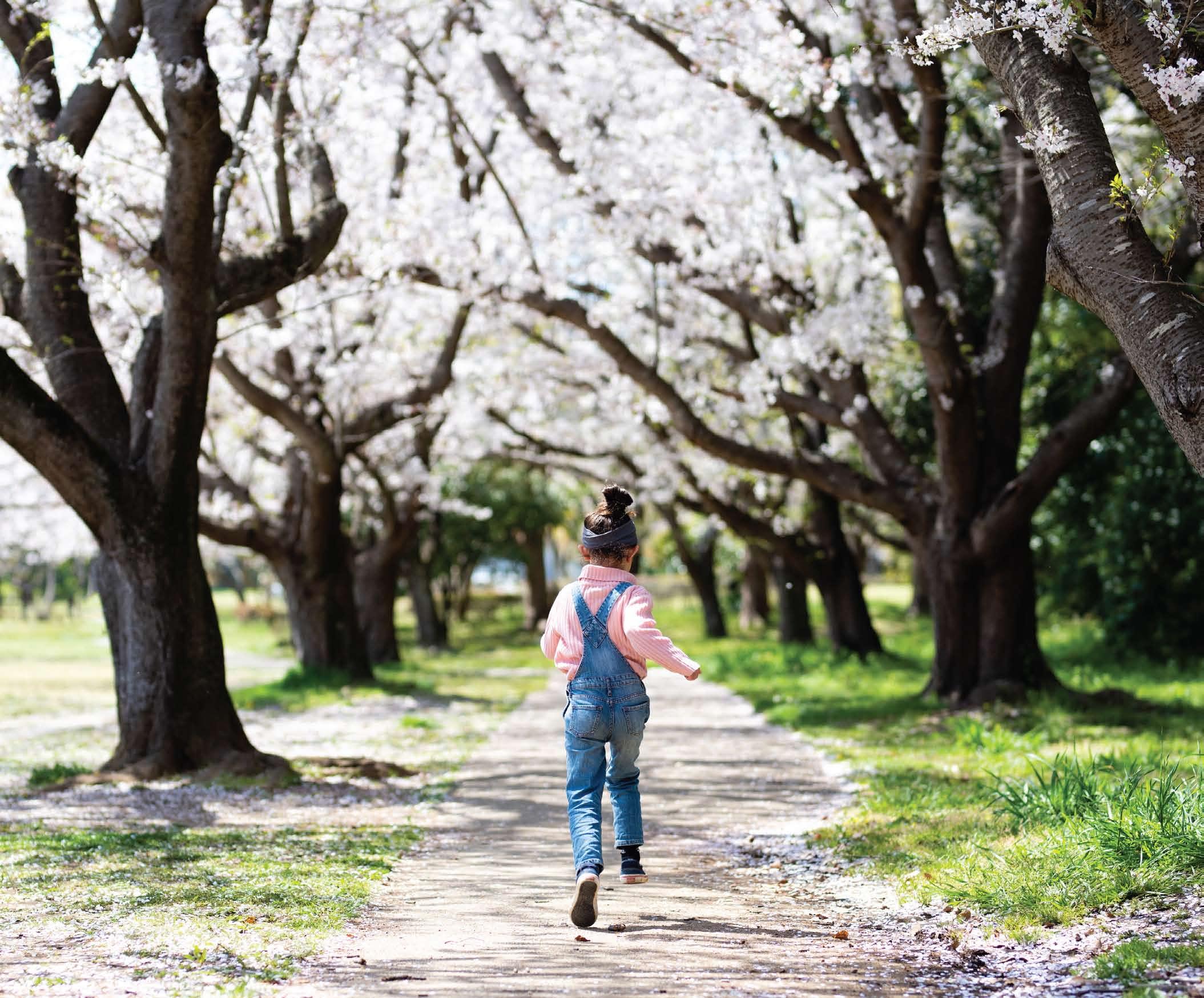
8 . Head to the Top of the Rock, where even the most seasoned New Yorker will be in awe of the views.
9. Walk over to Gansevoort Street and Washington Street, and enjoy a free Highline tour. Visit site for days and hours.
10. Swap those ice skates for roller skates when Flipper’s Roller Boogie Palace takes over The Rink at Rockefeller Center for the warmer months.
11. Go bird watching in New York- we show and share what birds you may see in this issue!
12 . Jump on a ferry for the full New York experience and head to Brooklyn Bridge Park -don’t forget to visit Janes Carousel, have a picnic, and take a selfie with the bridge as a background.
13. Head to Coney Island for a wild day! See live sharks at the New York Aquarium and stop to ride the Cyclone on your way home.
14 . Tour real Naval ships and meet our country’s Armed Forces members during Fleet Week, which kicks off just before Memorial Day Weekend.
15. Travel to the islands! And by “islands,” we mean Roosevelt Island, Governors
Island, and Little Island. Have a barbeque at Lighthouse Park on Roosevelt Island, visit The Yard for unique unstructured play on Governors Island, and see the flowers in bloom on Little Island.
16 . New York has the best ice cream ( we love Oddfellows Ice Cream and Mikey Loves Ice Cream to name a few); grab a scoop and enjoy the city.
17. Walk through the streets of DUMBO and discover the diverse art. From the famed DUMBO Walls to the stained glass Watertower sculpture on top of 20 Jay Street, there is something to discover at almost every turn.
18 . Spend the day at Books of Wonder at 18 W.18th St with the most exquisite and curated children’s books
19. Enjoy one of the unique carousels in New York of fiberglass fish illuminated with color-changing LED light fixtures. The SeaGlass carousel is at the Battery
Conservancy, located at the park’s southern end.
20. Go wild at the Bronx Zoo when you visit with animals from around the world! Plus, take in unparalleled views of the park when you add the Nature Trek to your visit filled with wooden bridges and tunnels to cross.
21. Whether you live near or make a day trip of it, head to Shadmoor State Park in Montauk features a vast ocean, hiking trails, birdwatching-pack a picnic and enjoy.
22 . Spend the day at Far Rockaway Beach and enjoy the boardwalk; bring your skater (and safety gear)- enjoy the 15,700 square feet concrete park of stairs, rails, ledges and more.
23. Visit waterfalls in Central Park-there are five in total and you can find them in the Ravine, which is the stream valley section of the North Woods.













Our Brooklyn Family partners share why camp is for everyone!
With summer fast approaching, the time is now to find the perfect camp for your child where they will have the opportunity to grow on an individual and social level. We asked some of our partner camps why parents should consider a summer program for their child this year. Here’s what they had to say!
why send a child to summer camp?
“Going directly from childhood to college is extreme. Allowing a child to take a brief excursion outside of their day to day life introduces them to the idea that there’s a world outside of what they know, a bed they can sleep in that’s not their own, and people from all over the country who are waiting to meet them.”
— Alison Krasnor, Executive Director,Boston Leadership Institute
“Summer programs are an incredible opportunity for kids to explore themselves
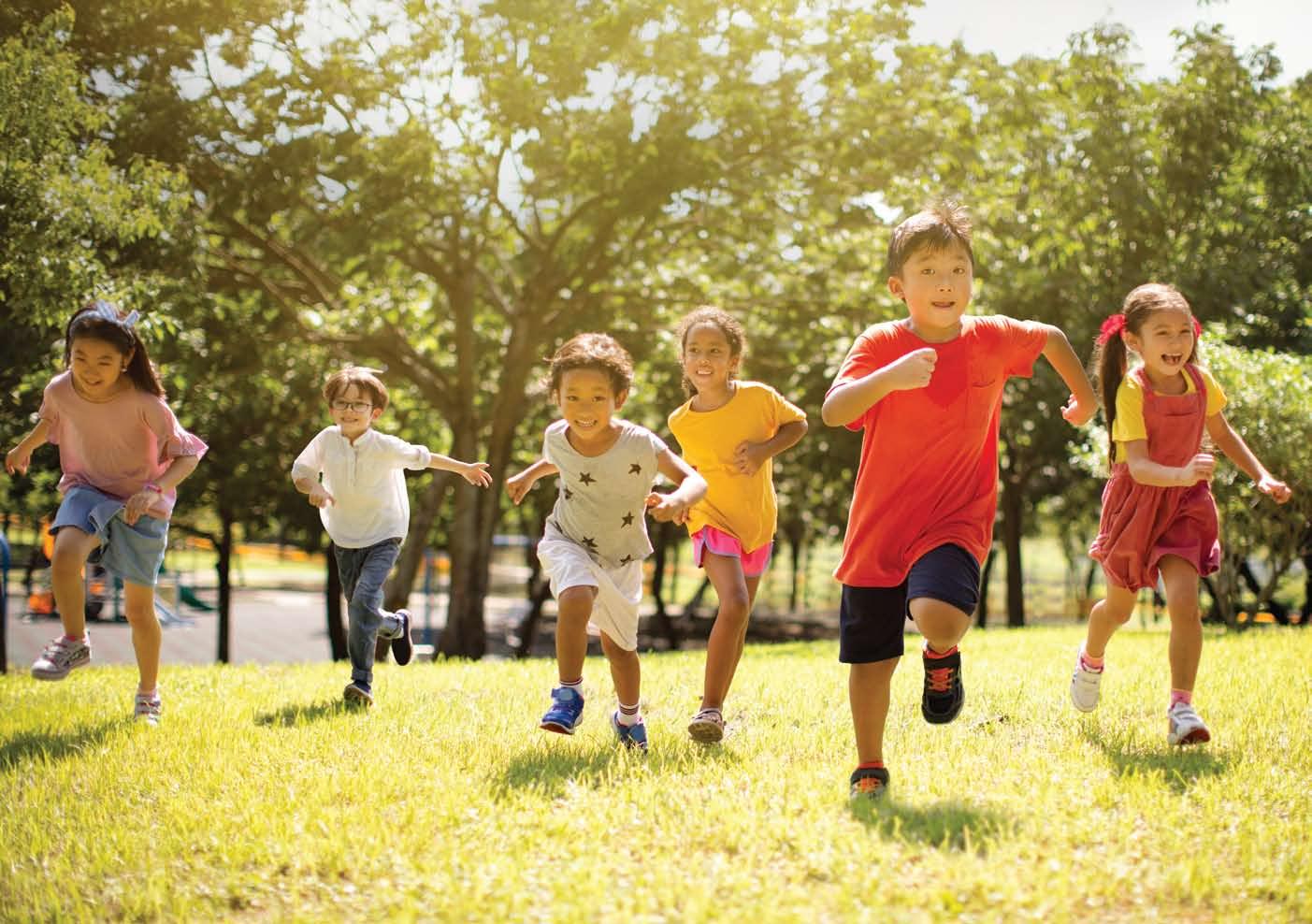
and grow a ton in a short span of time. This is made possible by enthusiastic, knowledgeable, caring instructors who put an emphasis on the life skills and providing a physically and emotionally safe environment for kids to thrive in.”
— Nina Roy, Programs Manager, Bouldering Project
“Camp is a time for exploration and, most importantly, curiosity!”
— Susan Lyon, Vice Provost, Curiosity Camp at Simon’s Rock
“Sending your child to camp expands your child’s social skills and independence.Camp offers something for everyone, such as swimming, arts & crafts, playground time, and sports.”
— Effie DiPrenda, Summer Camp Director, Summer at St. Bart’s Camp
“Parents should consider sending their child
to summer camp as another way to grow and learn. Like-minded campers bond through academic activities, physical activities, or random creative activities! As we have all learned through the pandemic years, there is no substitute for a child’s social interaction with their peers. Summer camp is one of the best ways to cultivate that interaction.”
— Scott Heifetz, Director and Founder, Launch Math + Science Centersh ow do kids flourish at summer camp?
“Students will meet other students with similar interests where they’ll be able to share their love of learning and form connections and friendships that will last a lifetime.”
— Amanda McBrien, Assistant Director, Cold Spring Harbor Laboratory DNA Learning Center
“At culture-themed camps, language and history become a fun learning experience through hands-on activities, engaging games, arts and crafts, and cultural exploration. Campers discover architecture, fashion, entertainment, transportation, and more.”
— Irene Coeny, Director, Planet Han Summer Camp













Summer & School Break Camps After School









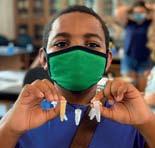

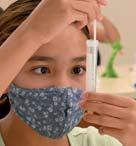



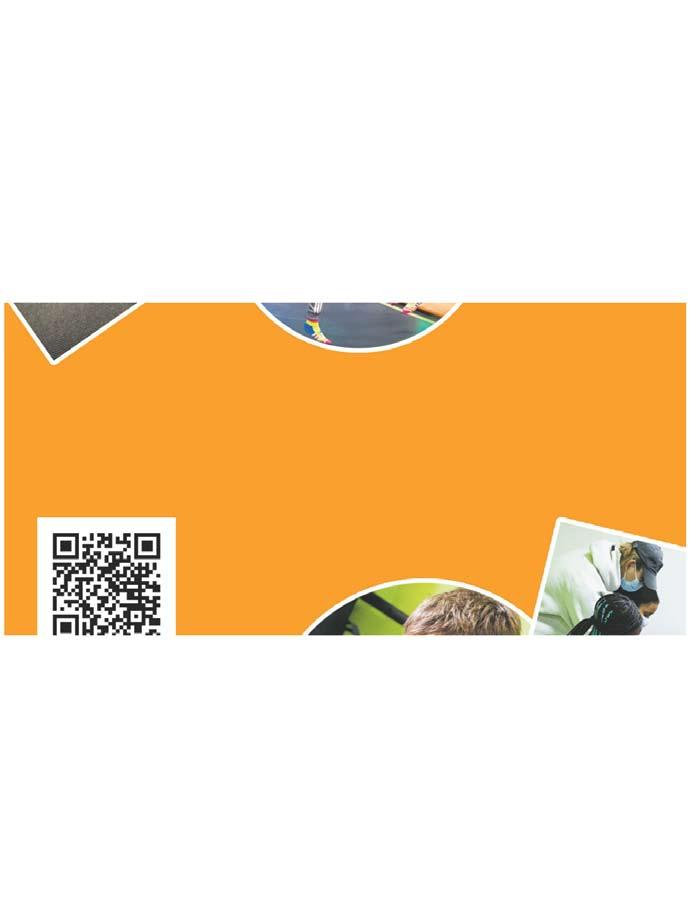
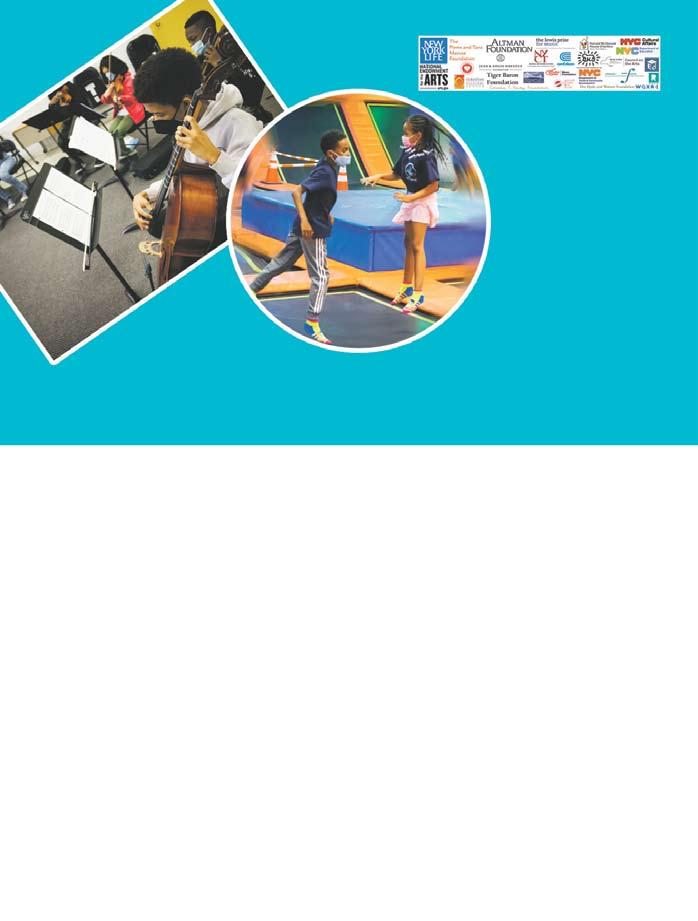








With Christine Carter, Ph.D. and Laura Kastner, Ph.D.
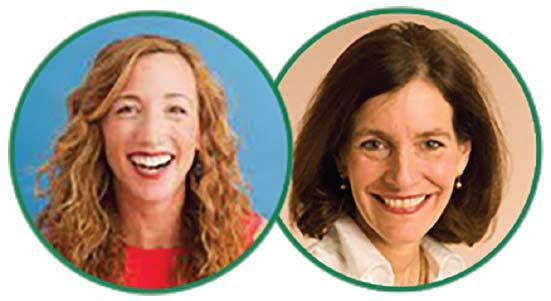
Tuesday, April 18, 2023, 5 p.m. ET




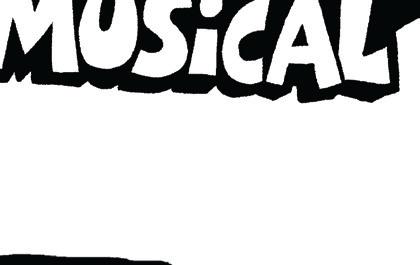
In this interactive talk, acclaimed sociologist and leadership coach (and mother of four teenagers!) Christine Carter, Ph.D., will draw on scientific research to outline realistic ways parents and educators can help preteens, teens and college students find focus and fulfillment through the development of effective habit formation, goal-setting and authentic leadership skills.
With trauma specialist and author Laura van Dernoot Lipsky
Tuesday, May 4, 2023, 4 p.m. ET

In this interactive talk, trauma exposure pioneer Laura van Dernoot Lipsky will offer practical tools to help us sustain, individually and collectively, in the face of trauma, secondary trauma and overwhelm. She will discuss what the consequences of trauma are as well as strategies for supporting ourselves and each other.
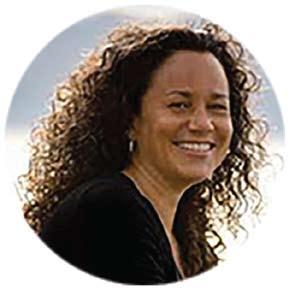
“You have to love a family show that makes adults laugh, too.”
“perfect for everyone”
A Hilarious Heartfelt Family Adventure

Have you noticed your child struggling in school? Perhaps they are having a hard time learning to read, can’t grasp multi step math problems, or are having difficulty staying focused in class. Their self-esteem is plummeting as school work becomes increasingly challenging, and their struggles seem insurmountable. Your child may have special needs and, if so, the sooner you can identify these needs and address them, the better it will be for their overall confidence and academic performance. So what can you do?
For starters, if you see your child struggling, talk to their doctor and teacher. Discuss milestones they may or may not have met and determine if their teacher notices the same challenges you see at home. If you feel these struggles are getting worse or think they may benefit from additional accommodations at school, you might consider having them tested. This testing can be done for free either through your state’s early intervention program (if your child is under age three) or through your child’s school district. The evaluation and specific tests administered may range, but evaluators will typically test your child’s IQ and will likely also test language, motor, behavior, and achievement skills.
Depending on the evaluation results and your child’s needs, your child may qualify for either an IEP or a 504 plan. An IEP details your child’s specific goals and a plan for what your school will do to help meet those goals, including specific services, like speech therapy, occupational therapy, physical therapy, and academic support. A 504 plan helps provide accommodations for support within the classroom, such as additional time on tests, an aide in the classroom, preferential seating, and/or modified homework. Typically students

who have a less severe disability (like anxiety, ADHD, etc.) and not a diagnosed learning disability will receive a 504. Students who need more services, including speech therapy, occupational therapy, physical therapy, special education teacher support services, etc., would receive an IEP. Note: School-aged children in private schools have a right to an evaluation if a disability is suspected. Work with your child’s teacher or school director to help you coordinate an assessment via the state.
Federal law indicates that every child is entitled to a free and appropriate education in the least restrictive environment possible. Three specific federal laws apply to children with special needs, including the Individuals with Disabilities Act (IDEA), Section 504 of the Rehabilitation Ace, and the Americans with Disabilities Act (ADA). These laws’ specifics can vary by state, so it’s important for you to understand the procedures and criteria specific to your state.
IDEA stipulates that a child’s issues must fall into one of 13 categories to be eligible for special education services. Section 504 mandates that schools cannot discriminate again students who have disabilities and are required to provide appropriate accommodations to them. Students covered under Section 504 usually have less severe disabilities or do not
fall into one of the categories stipulated under IDEA. The ADA indicates that children with special needs cannot be discriminated against and must be provided appropriate services and programs suitable to their needs. If your school district refuses to provide appropriate services to your child, you may initiate a due process hearing to challenge their decision.
It is easy to go into a bit of negative space when dealing with your child’s educational support. Remember to focus on your child’s strengths; they may struggle with reading and writing but may excel with math computation. Or maybe your child is incredibly social, empathetic, and kind. Perhaps they are a beautiful artist, a great storyteller, or a whiz at building Legos. Praise your child for small accomplishments, like sitting next to a friend at lunch who seemed sad, drawing a beautiful flower, or creating an elaborate Lego tower. As you help your child academically with areas where they may struggle, continue to build their self-esteem, and explain that no one is perfect. We all have strengths and weaknesses, as well as areas we need to work on improving. Your special needs child can still have dreams and aspirations that can be achieved with support and guidance.
Updated by Donna Duarte-Ladd











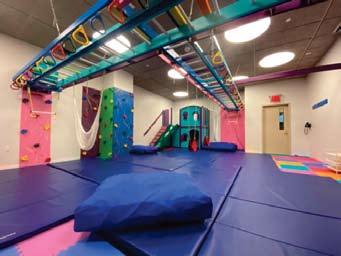
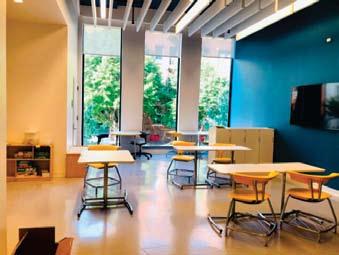





The most inspirational stories are often the kind where those at a disadvantage overcome obstacles and emerge victorious in spite of – and because of – the challenges they were faced with. Such is the case for Emily Yudofsky and Stefan Bauer, who were both diagnosed with dyslexia as children. After watching their own parents struggle to get the support they needed growing up, the pair teamed up to start Marker Learning, an organization dedicated to helping children with learning disabilities receive the diagnosis and resources they need to thrive in school.
We chatted with Stefan and Emily to delve into how their own experiences led them to start Marker and what parents can do if they suspect their child might have a learning disability.
Q: What are the signs of a learning disability parents should look for in their
kids? What are the signs of dyslexia, specifically, that parents should look for?
Emily: Learning and attention disabilities can present in a myriad ways. For example, a student with ADHD and executive functioning challenges may not be able to manage their time effectively, stay organized or prioritize multiple tasks.
With dyslexia, it can present in struggling to sound out words, substituting words, or even avoiding reading at all costs. We commonly see young children who are able to answer questions accurately when they are verbalizing, but have difficulty when they are writing out responses. Across the board, we find that for most students with learning challenges, they’ve lost a lot of confidence as they see their peers advancing and feel stuck. As a parent, it’s critical to notice some of the social and emotional challenges that might be manifesting because of a learning challenge.

Q: What are some of the types of learning disabilities you often see in children you
work with?
Stefan: We see a range of learning challenges in the children we work with, from reading, writing and math disorders like dyslexia, dyscalculia and dysgraphia, and attention disorders like ADHD which manifest in executive functioning issues.
Q: Is there anything parents can do to prevent learning disabilities?
Emily: The truth is learning disabilities cannot be prevented – we’re born with them and they last a lifetime. Many learning disorders are actually known to be genetic, running in families. So the question isn’t as much about prevention as it is about intervention, and the earlier, the better. This means pursuing a formal psychoeducational evaluation to understand what a child’s strengths and weaknesses are, and what services and accommodations they will need for long-term success. Then it’s all about providing evidence-based approaches to refine skills and get back on track.
Q: Tell us about Marker and what inspired you to start it?
Stefan: Our mission at Marker Learning has always been a very personal one. In elementary school, I really struggled with reading and was placed in special education. My mom knew something wasn’t right and fiercely advocated for me, quitting her job to ensure I had the support I needed to succeed, and paying thousands of dollars for a learning disability evaluation. I ended up getting diagnosed with dyslexia. By receiving this diagnosis and documentation, I was able to unlock accommodations in school that fundamentally transformed my trajectory in life. My co-founder, Emily Yudofsky, who is also dyslexic, had a similar experience as a kid.
Unfortunately, many families do not have access to evaluation. While K-12 students are legally entitled to learning disability assessments in public schools, diagnoses are often delayed or missed entirely due to unprecedented staffing shortages and backlogs. Private evaluators, meanwhile, can have months-long wait times and charge
exorbitant amounts of fees, often costing tens of thousands of dollars.
Our mission was inspired by these experiences. Our goal is to provide clear diagnosis and certified documentation for anyone who is dealing with a learning or attention disability – all for a much more affordable price and faster timeline.

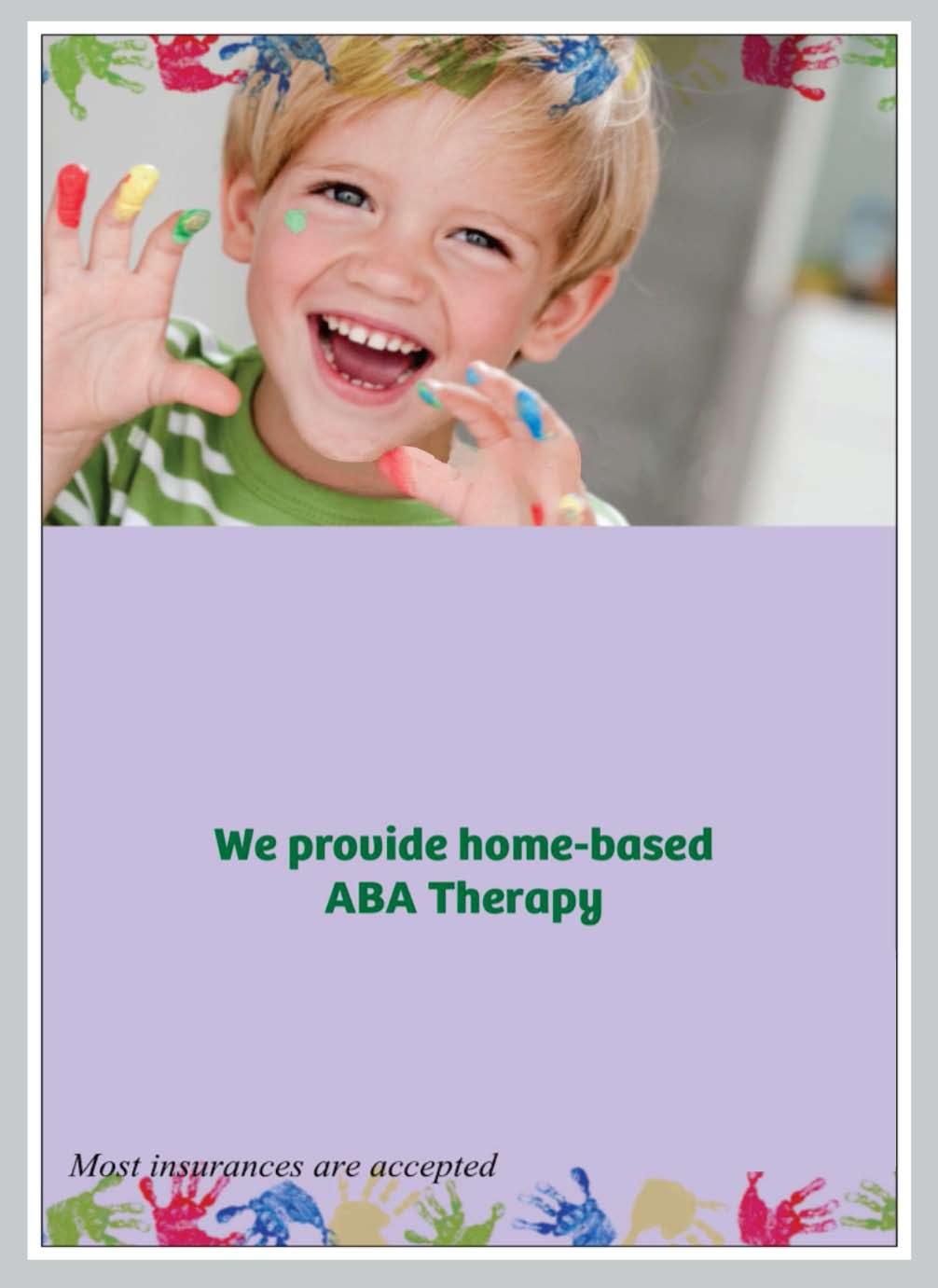
Q: What work do you do in schools?
Stefan: We’re very excited to partner with a range of schools across the country (including some in New York). In fact, we already reach more than 1 million students through these partnerships. We work with
school district special education staff to manage caseloads and act as an extension of school psychologist teams. We want to help schools retain their staff and prioritize dayto-day student care.
Q: What steps do you recommend parents take after their child is diagnosed with dyslexia or another learning disability?

Emily: Once you have that diagnosis and documentation, it’s then really about advocating for your child to get the support they need at school. Ensure your child is set up with an IEP or 504 plan, a written roadmap ensuring your child receives special education services tailored to meet their unique needs. This will follow them through school, and staff should reassess needs over time as your child develops. Communicate frequently and directly to gain clarity about how your child is doing in the classroom, and what’s being done to support them. And be sure to ask your child how they’re doing, ensuring they know there’s nothing wrong with them. They have so many amazing strengths and everyone learns differently.

“The question isn’t as much about prevention as it is about intervention, and the earlier, the better.”
The bond between humans and horses is incredible. For children with special needs, horse therapy can greatly help with many physical, mental, and emotional needs in a safe and loving environment. This modality can help children with ADD/ ADHD, autism, visual impairments, Down’s Syndrome, cerebral palsy, MS, learning and behavioral disabilities, and much more.
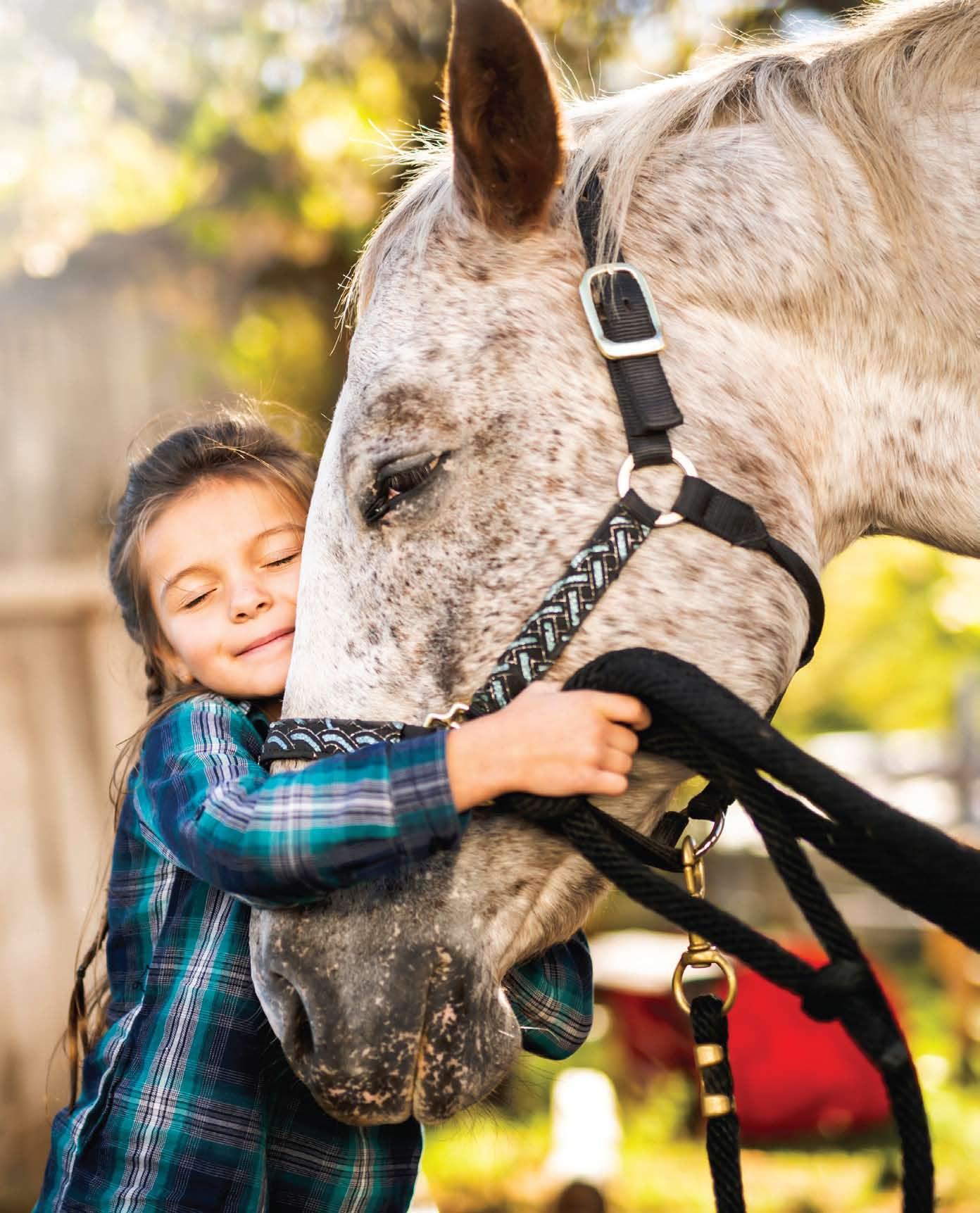
Path International (pathintl.org) states, “Therapeutic/adaptive horsemanship contributes to the cognitive, physical, emotional and social well-being of individuals with disabilities.”
Understandably, wanting to learn more and understand the best way to approach horse therapy may be unknown to most. We recommend checking out The New York State Horse Council (NYSHC). This nonprofit organization provides information on horses and horserelated activities within or affecting the state of New York. There is also a handy guide to Therapeutic Riding Programs in New York.
Over time, horse therapy can improve balance and posture, muscle strength and posture, joint movement, communication, and more as your child forges a special bond with this beloved animal. Below are a few places in NYC, Long Island, and Westchester where your child can begin their horse therapy journey.
Flying Manes Therapeutic Riding, Inc.
Flying Manes Therapeutic Riding provides therapeutic riding lessons and other equineassisted activities and therapies to children ages four and up with physical, cognitive, and emotional challenges. Lessons help kids build their coordination and strength and improve cognitive, emotional, and social skills through exercises, games, and horsemanship skills. 6100 Mosholu Ave, The Bronx, NY 10471. 917- 524-6648, info@flyingmanes.org
GallopNYC
GallopNYC offers therapeutic horsemanship programs to aid kids who have developmental, emotional, social and physical disabilities. Their program helps riders learn new skills such as walking, talking, learning, having fun, and bonding with their horse. Locations in Forest Hills and Howard Beach. Programs are offered quarterly and riders who have physical disabilities will be evaluated by their physical therapist. Lessons cost $60 for a 30-minute group lesson and $65 for a 30-minute private lesson. GallopNYC Forest Hills, 88-03 70th Road, Forest Hills, NY 11375 and GallopNYC Sunrise Stables, 80-98 Linden Blvd, Howard Beach, NY 11414, 855-925-5661, info@gallopNYC.org.
Seaside 4 Therapeutic Riding is a non-profit organization and PATH Internationalcertified therapeutic horseback riding center dedicated to working with adults and kids
with disabilities and special needs. The program offers both indoor and outdoor training and aid work with riders based on a family’s specific needs. The program can help improve muscle strength, flexibility, and balance, increase self-esteem, confidence, mobility, and coordination, and improve concentration, communication, and more. The grounds also have a wheelchairaccessible restaurant and bathrooms. Lessons are $50 each, which includes 25 minutes of saddle time as well as time for mounting and dismounting. 116 Canton Ct, Brooklyn, NY 11229, 646-831-6256, info@s4tr.org.
During the lessons at Great Strides, kids will learn how to improve balance, strengthen their muscles, flexibility and joints, and balance and posture. The team works with kids who have autism, brain damage, Down Syndrome, developmental disorders, ADD/ADHD, dyslexia,
and learning disabilities as well as kids with emotional, social and psychological disorders. Lessons are $60 for a 30-minute private lesson; $75 for a 45-minute private lesson; and $90 for a 60-minute private lesson. 41 Coram Swezeytown Rd, Middle Island, NY 11953, 631786-9708, julie@greatstridesli.org
The Center for Therapeutic Riding of the East End’s mission is to ‘transform lives through the therapeutic power of horses.’ This non-profit organization is PATH certified and provides services to kids and adults with emotional, cognitive, and physical disabilities. Participants have to apply and be brought in for an evaluation before working at the center. 93 Merchants Path, Sagaponack, NY 11962, 631.779.2835, program@ctreeny.org.
HorseAbility offers adaptive learning, which can help riders with physical, emotional and mental well-being as well as hippotherapy with Physical Therapists, Occupational
therapists, and Speech Language Pathologists. Hippotherapy provides physical, occupational and speech-language pathology to kids to help with their sensory,neuromotor and cognitive systems. Participants have to fill out a form to apply for these services. 223 Store Hill Rd, Old Westbury, NY 11568, 516-333-6151
Access Equestrian
Access Equestrian offers adaptive riding and hippotherapy for kids with physical and mental limitations. This non-profit organization offers both group and private lessons that include groundwork, warmup exercises, skills development, activities, games, and trail rides. Programs help build students’ self-esteem, concentration, confidence, coordination, and more. 1 Succabone Road, Mount Kisco, NY 10549, 914234-9000, info@accessequestrian.org
The Therapeutic Horsemanship program at Endeavor offers clinical programs to kids
of different levels and abilities. Participants in the therapeutic program have to be four years old and up. Kids will learn mounting, steering, groundsmanship, grooming, anatomy of the horse, posing, half-seat, leg yields, and much more. Over time, kids develop improved fine motor skills, increased confidence, and ability to take multi-step directions. Families must submit paperwork to work with Endeavor, where participants will be asked to come in for an evaluation.
556 Croton Lake Rd, Mt Kisco, NY 10549, 914241-0211. program@endeavorth.org
Pegasus
Located on 22 acres with seven sensory trails, Pegasus offers therapeutic horsemanship for kids with special needs from PATHcertified instructors. Programs provide basic riding, ground horsemanship, and exercises to improve balance, posture, mobility, and concentration, create the mind/muscle connection, and more. Participants have to fill out a form and pay a $55 evaluation fee. 310 Peach Lake Road Brewster, NY 10509, 845669-8235 x115, program@pegasustr.org.
718-207-0959
123learntospeakaba.org
info@123learntospeakaba.org
They provide home based ABA services and effective treatments for individuals with autism and other developmental disabilities. Their team of experienced therapists uses evidencebased techniques to teach new skills and improve behavior. With a focus on positive reinforcement, they work closely with families and caregivers to develop personalized treatment plans
that address specific needs and goals. Their goal is to empower individuals to reach their full potential and live fulfilling lives.
academy for young m inds 11-20 46th Road, Long Island City 646-670-5999 info@aymschool.org
AYM is an independent private school for midhigh functioning children on the autism spectrum. Led by Board-Certified Behavior Analysts®, AYM
focuses on social and functional language skills and provides personalized, rigorous curriculum using the principles of Applied Behavior Analysis.
r ichmond Behavioral a ssociates
260 Christopher Lane Staten Island, NY 10314 Ph: 718-317-5522 Web: rbany.com
Richmond Behavioral Associates (RBA) was founded to conduct safe, precise, well controlled
clinical research with potential new and existing medications. RBA is currently looking for people to participate in clinical trials for conditions such as Autism, Anxiety, Depression, Bipolar Disorder, Schizophrenia and Alzheimer’s Disease.
Richmond Behavioral Associates is located in Staten Island, and may provide transportation if needed. Call or visit their website to learn more and to see if you or a loved one may qualify for one of these trials.
New Yorkers and tourists have been flocking to Central Park, hoping to get a glimpse of Flaco, the now-famous owl who flew from his enclosure at the Central Park Zoo in February. After zookeepers gave up their efforts to recover him, the free bird has become a sight to see in the wild. But did you know you can see equally majestic birds all throughout NYC? It’s true! There are so many places to enjoy birdwatching in NYC, including parks, shorelines, even your own backyard.
In celebration of birds, we did some research, spoke to several bird and nature experts and visited lots of local parks to create this guide to some of the best places to see birds in springtime and throughout the year in NYC.
The guide is broken down by borough, park and species, so you can take it with you on your next birding adventure. And whooo knows, you might even run into Flaco along your travels!
Birdwatching in nyc: a fun family activity
Birdwatching is a great way to get in touch with nature. It’s also an activity that everyone in the family can enjoy together.
“Anyone can bird,” Roslyn Rivas, public programs manager for NYC Audubon, said. “Just being connected with nature is such a positive thing for individuals, but to share it with someone else really can foster a sense of community. You can all learn together. And the more eyes you have when you’re birding, the more likely you’ll see birds.”
And birding in NYC can be very fun. Despite the Big Apple being a bustling
metropolis, there are still lots of places to see nature, including birds. See, our city is located along the Atlantic Flyway, which is sort of like the I-95 highway for migratory birds. They fly from areas near and far all year long, especially during spring, so they need places to rest and refresh. (Whereas we humans like to stop at Starbucks or Applebee’s on long family road trips, migratory birds use New York City as one of their favorite rest stops!)
So, what is about NYC that’s so appealing to migratory birds? Basically, the habitat here is lush and diverse, providing ideal living quarters for so many traveling bird species.
“New York is so heavily urbanized but we have a lot of great green spaces,” Rivas said, adding that green roofs throughout the city also help provide habitat for birds.
In fact, Manhattan’s Jacob K. Javits Convention Center Green Roof is 6.75 acres and one of the largest in the country. It’s basically a wildlife sanctuary for lots of local and migratory birds. The center works with NYC Audubon to monitor and study the many birds that utilize the roof.
Over in Staten Island, which is also known as the borough of parks, habitat is diverse and plentiful for migrating birds, too.
“Staten Island is an extraordinary place to go birdwatching,” said Cliff Hagen, president of Protectors of Pine Oak Woods, an organization that works to save the borough’s natural heritage and open spaces. “If you were to go up 30,000 feet and look down at New York City, you have the Hudson River, Long Island Sound in Long Island, and it all converges on Staten Island. Hundreds of species of birds migrate through Staten Island as they’re going north and south every year. The topography of Staten Island lends itself to
bird migration.”
Of course, not all birds are just passing through the city. Some live here all year long (these are called “resident birds”). NYC resident birds include bluejays, mourning doves, pigeons, mallards and many others that live in parks, your backyard, or really anywhere birds fly.
If you’re wondering if the migrant birds get along with the resident birds--for the most part, they do!
“The birds that are here all year round expect the visitors now,” Rivas explained. “Of course, whenever you have new individuals in any kind of environment, they’ll have competition for resources. The influx of new bird species makes it a bit harder for certain birds that are comfortable in their niches. But, that’s why it’s so important to preserve our green spaces so we can have enough habitat.”
Now, squabbles at backyard bird feeders—that might be a different story!
your g uide to Birdwatching in nyc Listed here are popular parks around the city for birdwatching. Keep in mind there are plenty more places to see birds, of course. Birders throughout the city have seen and identified the birds in this guide.
It’s important to mention that it’s never guaranteed that you’ll see any or all of these feathered friends when you’re birdwatching, but half the fun is in trying to spot them! To learn more about birdwatching, bird species and more, there’s so much information online. Some of our favorite sites include:
• Protectors of Pine Oak Woods : siprotectors.org
• NYC Audubon: nycaudubon.org
• NYC Parks: nycgovparks.org
Pelham Bay Park
Bruckner Boulevard, Eastchester, Hutchinson
Let’s start up north in The Bronx’s Pelham Bay Park. This park is quite large. At three times the size of Central Park, Pelham Bay Park is the city’s largest park property. Designated an Important Bird Area by National Audubon, over 250 species have been recorded here.
BirDS to look for inclu De:
Spring: Black vulture, northern gannet, American woodcock, warblers and other songbirds, shorebirds
Summer: Clapper rail, wading birds, wild turkey
Fall: Raptor, shorebirds, kinglets, warblers, sparrows
Winter: Snow bunting, owls, accipiters, Canada goose, great blue heron, swan
Year-round: Peregrine falcon, great horned owl, merlin, red-tailed hawk, woodpeckers
New York Botanical Garden
2900 Southern Blvd.
In addition to seeing beautiful plants, you can see birds here too. The property’s diverse habitats have attracted a reported 229 bird species and make it a migrant bird hotspot!
BirDS to look for inclu De:
Spring : Warblers, tanagers, grosbeaks, orioles and other songbirds
Summer : Nesting wood duck, green heron, red-tail hawk, rubythroated hummingbird
Fall : Raptors, ruby-throated hummingbird, warblers, sparrows
Winter : Owls, woodpeckers, rusty blackbird, mixed songbird feeding flocks
Year-round : Resident wood ducks, red-tailed hawks
Central Park
Fifth Avenue to Central Park W., 59 Street to 110 Street
As busy and bustling as Manhattan is, the city’s geographically smallest borough offers lots of opportunities for Birdwatching in NYC. One of the most famous parks in the
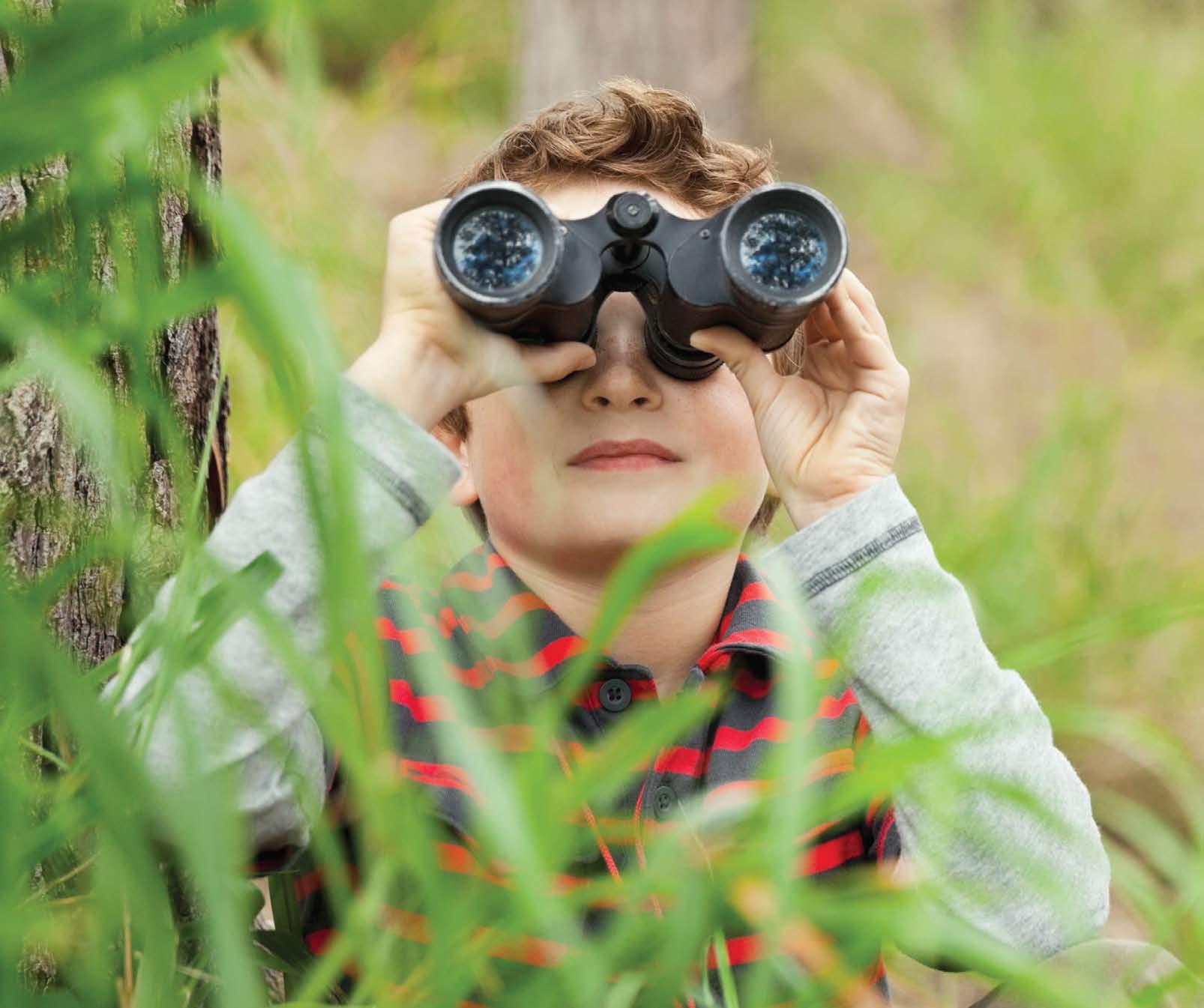
world, Central Park provides habitat for lots of migratory birds. On a side note: Have your camera ready, because there are lots of Instagram opportunities located throughout this iconic park!
BirDS to look for inclu De:
Spring : Flycatchers, cuckoos, warblers, vireos, kinglets, tanagers, grosbeaks, wading birds and waterfowl, freshwater sandpipers
Summer: Nesting red-tailed hawk, Baltimore oriole, foraging wading birds
Fall : Warblers, thrushes, sparrows, raptors
Winter : Mixed songbird flocks, owls, accipiters, wintering waterfowl and gulls
Year-round : Red-tailed hawk, Peregrine falcon, common woodpeckers
Governors Island
Accessible by ferry from Lower Manhattan
Located right in the middle of the New York Harbor, Governors Island serves as a great resting spot for migrant birds.
BirDS to look for inclu De:
Spring : Owls, gulls, woodpeckers, flycatchers, warblers, tanagers, orioles, and grassland birds
Summer : Black skimmer, purple martin, nesting common tern, herring and great black-backed gulls, fish crow, eastern kingbird
Fall : Raptors, freshwater sandpipers, woodpeckers, flycatchers, grassland birds, warblers, and other songbirds
Winter : Owls, accipiters, diving birds, songbird feeding flocks
Year-round : Gulls, red-tailed hawk, American kestrel, fish crow
Jamaica Bay Wildlife Refuge
This beautiful natural area, part of the National Park Service, is a marshy estuary shared by Queens and Brooklyn. It’s a very important stopover site for migrating shorebirds.
BirDS to look for inclu De:
Spring : Shorebirds, wading
birds, terns, orchard oriole, rusty blackbird, courting American woodcock, flycatchers, cuckoos, warblers, and tanagers
Summer : Nesting willet, American oystercatcher, clapper rail, osprey, ruby-throated hummingbird
Fall : Shorebirds, wading birds, raptors, flycatchers
Winter : American crow, rock pigeon, wintering waterfowl, accipiters, northern harrier
Year-round : Peregrine falcon, barn owl, great horned owl, bald eagle
Beach 3 to Beach 153 Streets and Boardwa lk to Atlantic Ocean
The Rockaway beaches are great to visit in the summer, or any time of year. The area is home to important nesting sites for many threatened bird species. The waters on both bay and beach side attract lots of wintering sea birds, too.
BirDS to look for inclu De:
Spring : Lingering waterfowl, northern gannet, shorebirds, flycatchers, thrushes, warblers, tanagers, and other land birds
Summer : Beach-nesting black skimmers, common and least terns, American oystercatchers, and piping plovers; osprey, migrating shorebirds
Fall : Accipiters, falcons, buteos, shorebirds, warblers, thrushes, sparrows
Winter : Wintering sea ducks, grebes and loons, northern gannet, pelagic birds, purple sandpiper
Year-round : Peregrine falcon, gulls
Floyd Bennett Field
Floyd Bennett Field is one of the best places in NYC to see gorgeous snowy owls with their striking white plumage. And they make quite a trip to the city, all the way from the Arctic Circle! (They often come here when their food sources run low up north.)
BirDS to look for inclu De:
Spring : Flycatchers, purple martin, black-billed cuckoo, warblers and other
songbirds; lingering waterfowl, American Woodcock
Summer : Nesting American woodcock, killdeer, willet, great crested flycatcher, eastern kingbird, willow flycatcher, whiteeyed vireo, tree swallow, cedar waxwing, yellow warbler, American redstart, Baltimore and orchard oriole
Fall : Raptors, warblers, thrushes, sparrows
Winter : Snowy owl, horned lark, snow buntings, lapland longspurs, loons, ducks
Year-round : Peregrine falcon, grassland birds, sparrows, great horned owl, American kestrel, northern harrier
You can spend a whole day exploring these two Brooklyn venues. The diverse habitat of woodlands, gardens, meadows, lakes and streams here is attractive to migrating birds during spring and fall. Birders have recorded 289 species in Prospect Park, which has been designated an Important Bird Area by National Audubon.
BirDS to look for inclu De:
Spring : Flycatchers, cuckoos, warblers, tanagers, orioles, grosbeaks, and other songbirds
Summer : Nesting species including possible green heron, Cooper’s hawk, Acadian flycatcher
Fall : Raptors, kinglets, warblers, sparrows
Winter : Waterfowl, accipiters, owls, songbirds
Year-round : Peregrine falcon, great horned owl, merlin, red-tailed hawk, woodpeckers
500 25th St.
This National Historic Landmark in Brooklyn is another green space that’s popular with both birds and birders. The beautiful cemetery is well known for the monk parakeets that nest upon its gates, but many other species live here, too.
BirDS to look for
inclu De:
Spring : Flycatchers, cuckoos, warblers, tanagers, orioles, grosbeaks, and other songbirds; spotted and solitary sandpiper
Summer : Eastern kingbird, warbling vireo, ce-
dar waxwing, Baltimore oriole, wading birds
Fall : Raptors; warblers, kinglets, thrushes, and other songbirds
Winter : Accipiters, owls, mixed songbird feeding flocks, waterfowl
Year-round : Monk parakeets, red tailed hawk, woodpeckers, wood duck, belted kingfisher
Shirley Chisholm State Park
950 Fountain Ave.
This beautiful state park is named in honor of Brooklyn-born Shirley Chisholm, who was the first African American Congresswoman. The park offers biking, fishing, hiking, and of course, lots of opportunities for bird watching!
BirDS to look for inclu De:
Spring : Black skimmer, blue heron, Baltimore oriole, Louisiana waterthrush, house wren
Summer : Willow flycatcher, Forster’s tern, osprey, herons
Fall : Shorebirds, wading birds, raptors, flycatchers
Winter : Waterfowl including swan, accipiters, short-eared owl, snow buntings, horned larks
Year-round : Peregrine falcon, northern harrier, American kestrel, gulls
Marine Park
Flatbush, Gerritsen and Fillmore Avenues, Jamaica Bay
This 530-acre park offers lots of opportunities for birdwatching.
BirDS to look for
inclu De:
Spring : Flycatchers, cuckoos, warblers, tanagers, orioles, grosbeaks, and other songbirds; shorebirds, wading birds
Summer : Nesting killdeer, willet, clapper rail, osprey, willow flycatcher, cedar waxwing, yellow warbler, common yellowthroat, boat-tailed grackle
Fall : Shorebirds, wading birds, raptors, flycatchers, songbirds
Winter: Waterfowl, American crow, downy woodpecker, accipiters, northern harrier, songbirds
Year-round : Peregrine falcon, red-tailed hawk, American kestrel; gulls
Mount Loretto Unique Area
Staten Island’s South Shore, Hylan Boulevard
This sprawling natural area encapsulates many different kinds of habitat, including beach, forests, wetlands and more, all of which supply everything local wildlife and plants need to survive. Plus, there’s easy parking and cleared paths to walk along during your birdwatching adventure.
BirDS to look for inclu De:
Spring : Herons, woodpeckers, eastern screech owl, northern gannet, American oystercatcher, sparrows, common merganser
Summer : Wading birds, gulls, terns, American oystercatcher, osprey, shorebirds, killdeer, eastern kingbird, orchard and Baltimore oriole, indigo bunting, cedar waxwing, swallows, brown thrasher
Fall : Shorebirds, raptors, warblers, thrushes, sparrows and other songbirds
Winter : Waterfowl, gulls, alcids, northern gannet
Year-round : Bald eagle, waterfowl, gulls
Great Kills Park
Staten Island’s South Shore, Hylan Boulevard
Part of the Staten Island unit of Gateway National Recreation Area, this park is 523 acres and great for birdwatching.
BirDS to look for inclu De:
Spring : Shorebirds, waders, northern gannet, warblers, other land birds
Summer: Wading birds, gulls, terns, American oystercatcher, osprey, migrating shorebirds, nesting killdeer, fish crow, swallows, yellow warbler, cedar waxwing, orchard and Baltimore oriole, boat-tailed grackle
Fall : Shorebirds, raptors, warblers, sparrows and other songbirds
Winter : Hairy woodpecker, waterfowl, gulls, alcids, purple sandpiper, northern gannet, yellow-rumped warbler
Year-round : Bald eagle, gulls
Conference House Park 7455 Hylan Blvd.
Located at the southernmost tip of Staten Island–not to mention the southernmost
tip of NYC- is Conference House Park. This waterside park, where the Arthur Kill joins Raritan Bay, has dunes, beaches, wetlands, meadows and wooded bluffs that birds love.
BirDS to look for inclu De:
Spring : Shorebirds, waders, northern gannet, flycatchers, vireos, thrushes, warblers, tanagers and other land birds
Summer: Wading birds, gulls, terns, American oystercatcher, osprey, shorebirds, orchard and Baltimore orioles
Fall : Shorebirds, raptors, chimney swift, land birds
Winter: Hairy woodpecker, waterfowl, wild turkey, gulls, alcids, purple sandpiper, northern gannet, sparrows
Year-round : Bald eagle, gulls, woodpeckers, songbirds
Clove Lakes Park
Forest Avenue, Victory Boulevard bet. Clove Road and Brookside Avenue, Royal Oak Road
This city park is a protected Forever Wild site because of its ecologically valuable lands. Staten Island families flock to Clove Lakes Park to enjoy many outdoor activities, including birdwatching.
BirDS to look for inclu De:
Spring : Warblers, songbirds, bank swallow, grosbeak, orchard oriole
Summer : Egrets, great blue heron, green heron, Baltimore oriole, Cooper’s hawk
Fall : Kinglets, raptors, sparrows
Winter : Waterfowl, accipiters, owls, songbirds
Year-round : Owls, red-tail hawk, woodpeckers
The Staten Island Greenbelt 700 Rockland Ave.
The Greenbelt is a major attraction for Staten Islanders. It’s a nature lover’s delight, and there are plenty of outdoor activities for families to enjoy, including birdwatching.
BirDS to look for inclu De:
Spring: Waterbirds, thrushes, kinglets, warblers, tanagers, orioles, grosbeaks
Summer : Lots of forest birds, wading birds
Fall : Kinglets, warblers, sparrows, raptors
Winter : Waterfowl, accipiters, songbirds
Year-round : Turkey vulture, red-tail hawk, owls, woodpeckers
green meadows farm
easter egg hunt 2023
when : April 1-16 Saturdays and Sundays, 10 am – 4 pm and April 7, 10, 10 am – 4 pm. where : Aviator Sports and Events Center, Floyd Bennett Field, 3159 Flatbush Ave., Bergen Beach
ageS: All
what: Hunt for colorful eggs filled with treasures and spend a fun-filled day with Whiskers, the Easter Bunny, and so much more!
want to go?: $14 per person age two and older. Aviatorsports.com
earth rocks!
when : April 8-16, 10 am – 5 pm, daily
where : Brooklyn Children’s Museum, 145 Brooklyn Ave, Crown Heights
ageS: All
what: Explore the mysteries of the sky, sea, and soil through art-making, natural science exploration, STEM workshops, and interactive performances. want to go?: $13; $12 grandparent. (718) 735–4400, brooklynkids.org
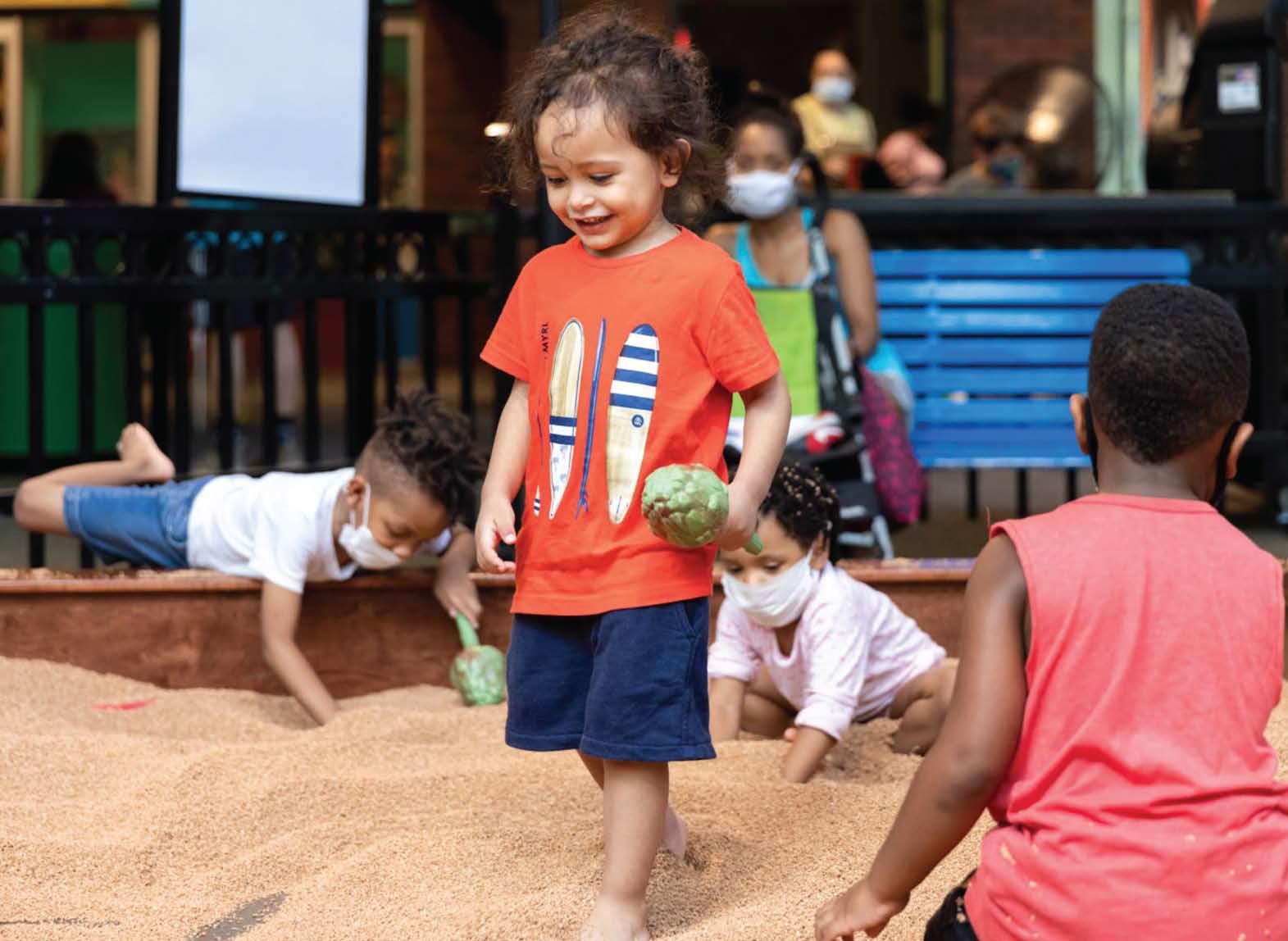
Spring opening at the audubon center
when : April 8, 10 am – 1 pm where : Prospect Park
Audubon Center, 101 East Drive, Prospect Lefferts Garden ageS: All
what: Kick off the spring season with interactive games, animal encounters and much more.
want to go?: Free. prospectpark.org
Stroller tour at the Brooklyn museum
when : Wednesday, April 12, 10 – 11:30 am
where : Brooklyn Museum,
200 Eastern Parkway, Prospect Heights
ageS: 2 and under
what: This interactive, strollerfriendly tour features touchable objects, songs, exploration of artworks, and an opportunity to connect with other adults.
want to go?: $29 per adult. (718) 638–5000, brooklynmuseum.org
farmhouse family Day: working with wood
when : April 15, 11 am – 3 pm where : Wyckoff House Museum, 5816 Clarendon Road, East Flatbush
ageS: 4 - 10
what: Celebrate Earth Day by learning all about trees and creating your own personalized wooden coasters.
want to go?: Free. wyckoffmuseum.org
cirque kalabanté
when : Friday, April 21, 7 – 9 pm and Saturday, April 22, 2 –4 pm & 7 – 9 pm. where : BAM Strong, 651 Fulton St. Boerum Hill ageS: 6 and older
what: World-class acrobats dance, leap, and dazzle in this colorful creation that brings together circus arts, African dance, and music from West Africa.
want to go?: $17-$27. bam. org
little miss ann & Suzi
Shelton at Jalopy theatre
– earth Day celebration
when : Wednesday, April 22, 11 am – 12 pm
where : Jalopy Theatre, 315 Columbia St., Red Hook ageS: 8 and under
what: Celebrate Earth Day with Little Miss Ann and Suzi Shelton by singing songs about friendship, community and social justice.
want to go?: $10; $5 kids. (718) 395–3214, viewcy.com
the new york international auto Show
when : Starting April 7, Mondays – Saturdays, 10 am –10 pm, through April 16.
where : Jacob Javits Center, 655 W. 34th St. Chelsea ageS: All
what: The Auto Show offers exciting and unique ways for families to explore the latest in auto innovations with immersive and interactive exhibits.
want to go?: $21; $7 ages 12 and younger. autoshowny.com
Dr. kaboom & the wheel of Science
when : April 16, 2 pm
where : BMCC Tribeca Performing Arts Center, 199 Chambers St. New York
ageS: 8 and older
what: Help Doktor Kaboom pick science demonstrations in this exciting and interactive stage show.

want to go?: $30. tribecapac.org
paw patrol live! heroes unite

when : April 22 & 23, 10:30 am, 2 pm & 5:30 pm.
where : The Theater at Madison Square Garden, 4 Penn Plaza, New York
ageS: All
what: This brand-new interactive live stage show features stunning visual effects, captivating storytelling and a vibrant musical score.
want to go?: Tickets start at $50. pawpatrollive.com
the peking acrobats featuring the Shanghai circus
when : April 7, 8 pm where : Queensborough Performing Arts Center, 222-05 56th Avenue, Oakland Gardens
ageS: All
what: Witness a limit pushing performance that will have you on the edge of your seat. want to go?: $33 - $58. qpac.qcc.cuny.edu
hands on history: Jackie in Queens
when : April 15, 1 – 4 pm
where : King Manor Museum, 150-03 Jamaica Ave. Jamaica
ageS: 3 – 12
what: Celebrate the legacy of one of baseball’s brightest stars, learn about his time in Queens, and design your own baseball pennant. want to go?: Free. (718) 206–0545, kingmanor.org
apple Blossom carnival
when : April 22-40, Saturdays and Sundays, 11 am – 6 pm; Friday, April 28, 5:30 – 8:30 pm.
where : Queens County Farm Museum, 75-50 Little Neck Parkway, Glen Oaks ageS: All
what: Celebrate the season with carnival rides, hayrides, midway games, local food, and visit with some farm animals! want to go?: $25 per person; free for ages 0-2. (718) 347–3276, queensfarm.org
State Ballet of georgia
when : April 16, 6 pm
where : Lehman Center for the Performing Arts, 250 Bedford Park Boulevard West, Bronx ageS: All
what: See a rare U.S. performance from this world famous company! want to go?: $32-$83. (718) 960–8833, lehmancenter.org
family art project: Barking up a wave hill tree
when : Starting April 29, Daily, 10 am – 1 pm, through April 30. where : Wave Hill, 4900 Independence Ave. The Bronx ageS: All
what: Visit some of Wave Hill’s treasured trees and have a tactile experience making simple but rich bark rubbings to decorate and frame. want to go?: Included with admission: $10; $6 students and seniors 65 and older; $4 children 6 and older; free for members. (718) 549–3200, wavehill.org
The 20th iteration of the annual Orchid Show at the New York Botanical Garden will be wrapping up April 23rd. Head over to The Orchid Show: Natural Heritage, designed by landscape artist Lily Kwong- featuring immersive installations with thousands of orchids.

Through Kwong’s design inspired by Chinese garden design and artistic principals, visitors will be transported and immersed in the magic.
Kwong’s design for Natural Heritage was inspired by her own culture and heritage.
“This exhibition’s design is my most autobiographical work to date,” Kwong said in a press release. “And the piece took shape through meditation and exploration of my ancestral roots stretching back generations to Shanghai.”
Utilizing a variety of orchids and inspired by classic Chinese mountainscape paintings passed down through her family from Shanghai, Kwong creates towering figures that envelop visitors and blend ecology, culture and fantasy.
Through the combination of Kwong’s heritage, medicinal traditions and the idea of nature as a healing force, Natural Heritage brings visitors into a world where nature and humanity coexist in harmony.
The horticulturalists and exhibitions staff members at NYBG have worked with Kwong to bring her vision to life by assembling selections of orchids native to Asian countries and companion plantings.
These displays are meant to be emotionally evocative and inspire visitors to reflect on their own plant heritage and ancestry.
“At a time when we are all starved for connection, the prayer of this installation is
to offer a sense of community, reciprocity, and grounding into ancient wisdom and traditions that have guided us for millennia,” Kwong said. “Orchids are the perfect plant to draw people into the complexities of our relationships with the natural world and our vital roles nourishing those connections.”
Kwong is the first woman of color to take on the role of guest designer for the Garden’s Orchid Show, and she said because of this “it felt urgent to celebrate an Asian-centered perspective in the midst of this charged and precarious moment.”
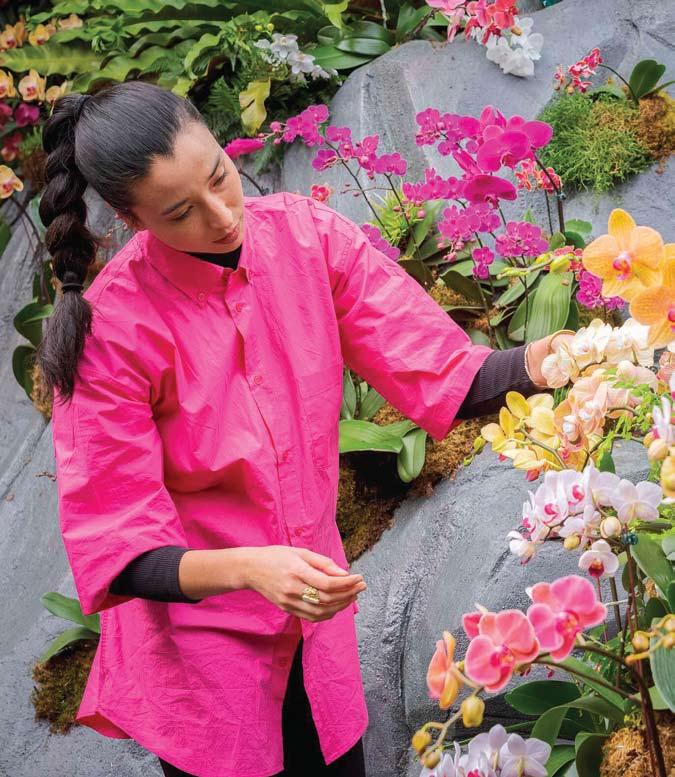
“The piece is meant to offer a bridge of cultural understanding across the valley between us, and act as an invitation to celebrate the diverse lineages that make up our country,” Kwong said.
If you’re looking for a parents’ night out, see The Orchid Show on an Orchid Night, select evenings (head to the site for days and times) where adults over 21 can experience the exhibition with music, cash bars and food.
The New York Botanical Garden is located at 2900 Southern Blvd., Bronx, NY 10458. A ticket provides daytime entry to The Orchid Show in the Enid A. Haupt Conservatory and to NYBG’s outdoor gardens and collections. A separate ticket is required for access to Orchid Evenings.
l andscape artist l ily Kwong
With Spring Break right around the corner, now is the time to start planning your travel itinerary. We have details on a one-of-a-kind destination that has something for everyone at every price point: American Dream!
This 3-million-square-foot entertainment retail center is just a few miles outside of NYC, located in East Rutherford, New Jersey. You’ll find world-class shopping, divine dining, unique birthday options, DreamWorks Water Park, Nickelodeon Universe Theme Park, and many more exciting attractions to explore. Plus, you can save big with the Spring Break Pass. Experience the magic of American Dream from April 1–May 12 for $165, which includes admission to the theme park and water park, an exclusive combo meal gift card, and a gift shop discount.
Don’t have time to map out a visit? We’ve created some sample itineraries so you can focus on making memories that last.
Do you have children in preschool or kindergarten? We know how challenging it can be to plan a trip with little kids. Skip the stress with this toddler-friendly game plan:
11:30am: Fuel up for your jam-packed day with coffee and donuts from Dunkin’!
12pm: Get your thrills at the nation’s largest indoor theme park, Nickelodeon Universe, with plenty of rides and entertainment for the little ones.
2pm: Stop in for a delicious lunch at Five Guys.
3pm: Take a spin on the only observation ferris wheel in New Jersey, the Dream Wheel, which offers stunning views of NYC and fun experiences for the whole family.
4pm: Keep the energy up at IT’Sugar, the world’s first and only candy department store.
4:30pm: Shop Abercrombie Kids for all the little one’s clothing needs.
5pm: Head back to the city after a long day of family fun!
Bigger kids in middle school and high
school are always looking for the next social-media worthy adventure. American Dream has plenty in store for the older kids crowd. From immersive rides to thought-provoking games, here’s your family itinerary for big kids and teens:
12pm: Satisfy your cravings at the only physical MrBeast Burger in the world, founded by the most popular YouTuber of all time, MrBeast!
1pm: Experience splashy fun at North America’s largest indoor water park, DreamWorks Water Park, with recordbreaking slides guaranteed to be a blast!

4pm: Speaking of blast, be sure to stop by Blast 7D, the world’s first fully interactive and fully immersive 7D ride!
5pm: Stock up on the latest fashion trends at the best prices at Primark.
6pm: Top off the day with a fun family activity at The Escape Game, where you will work together to find clues, solve puzzles, and ultimately complete a mission!
7pm: Head back to the city after your adventure-filled day!
If your game plan is to drop the kids at the parks and treat yourself to a day of shopping and dining, American Dream boasts some of the best stores and restaurant experiences in the country. Foodies, rejoice. This itinerary is great for parents traveling solo to enjoy some coveted “me time”:
10am: Fuel up for your jam-packed day with a coffee or refresher from Starbucks or Cortaditos.
10:30am: Shop the largest Primark on the East Coast- there’s something for everyone in the family!
11am: Stock up on basic essentials at Old Navy.
12pm: Satisfy your cravings at House of ‘Que, an authentic Austin barbecue restaurant that prepares their BBQ Texasstyle and provides fun entertainment with dueling pianos, country music, and sports game streaming.
2pm: Get your thrills at the largest indoor theme park, Nickelodeon Universe, with plenty of rides and entertainment that the whole family will love.

5pm: Challenge your putting skills at Angry Birds Mini Golf.
6pm: Treat yourselves to an elevated fare at Carpaccio, an Italian restaurant that offers traditional recipes revisited in a contemporary style where culinary techniques and simplicity of the ingredients merge to make the dishes enjoyable at the table!
8pm: Finish the day with something sweet from Lucciano’s, which serves the most delicious flavors and the finest artisanal experience.
Birthday Fun! Is your child’s birthday happening during the break? Get the kids together at one of American Dream’s famous attractions. Check out their birthday packages at americandream. com/birthdays!
Visit American Dream at 1 American Dream Way, East Rutherford, NJ 07073. For details on ground transportation, head over to americandream.com/transportation.




